August 28, 2016
Martha O'Kennon
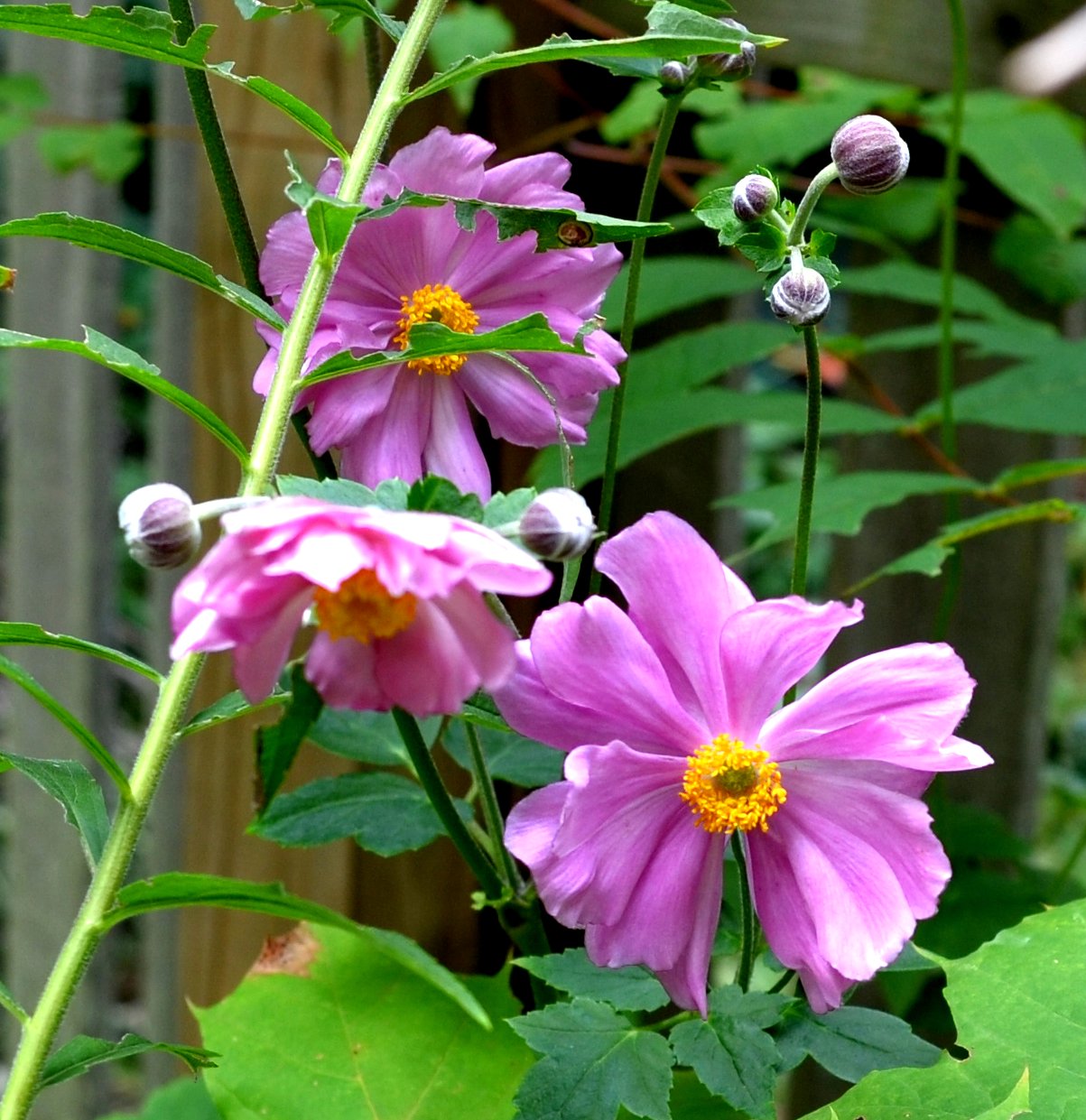


It's still summer after about 9 a.m. But if you can get out there earlier, you might detect an abatement in the incessant heat. They're saying now that the past 15 months have all taken record high temperatures. Hmmmm. Meantime, the Japanese anemones are starting up their usual late August show. These tiny zinnias are all that's left of some annuals in the window box. But the giant hibiscus made such a huge flower that I had to hold it up for its portrait.
Remember that there is information in the name of the file for each image. You can see it by mousing over the image - look at the lower left of the screen.
I would try clicking on the image. If the little "+" sign appears, it means you can enlarge again. While it is in "+" mode, click on something you want to see more clearly and it will zoom to that section. Then the info is displayed in the address line above. If the image has been cropped
so that clicking on it doesn't result in a larger picture, you can always hit control-plus to increase the size of the image.
Ants, ants, ants. They're everywhere. Here are two busy little "carpenters" with a "velvet ant" between them. I'd always thought the dreaded velvet ants were a southern thing. But this little fellow as out front on the hostas yesterday. Turns out they are called velvet because they are very hairy. But they aren't ants - they're wasps! And from what I've read, they make up for their size (a barely visible 2 mm) with a sting that really packs a punch, one of the most painful stings in this lovely world. They look cute, but don't pat them.
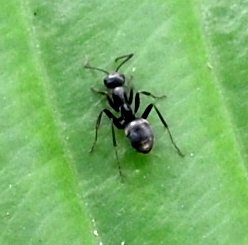

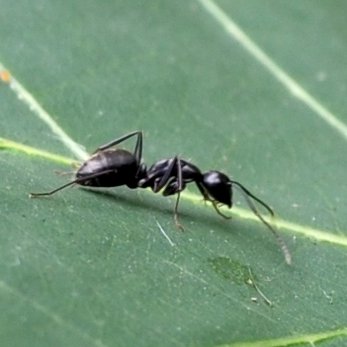
This tiny bee is so common and there are so many tiny bees it is really hard to decide on even the genus. I probably should call it for now Lassioglossum. With the same guarded confidence, I think I have identified this striped bee with the yellow legs who was so entranced in the Hosta bloom. It is Halictus rubicundus. Note: in the pictures, it looks the same size as the first one but is at least twice as big. Last, here is another tiny unidentified bee.
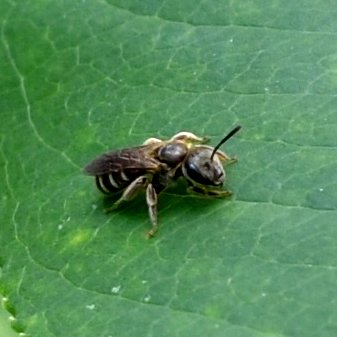
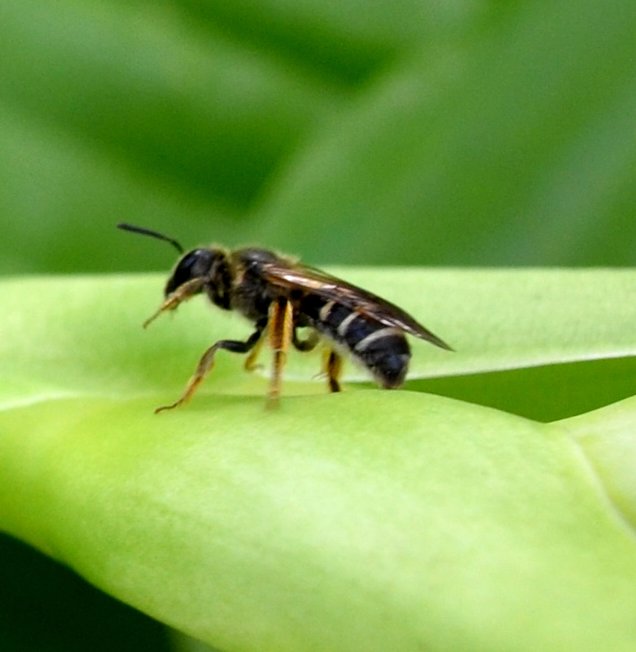
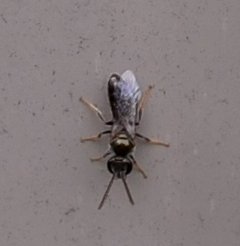
I finally got one of those green sweat bees to hold still long enough to focus!
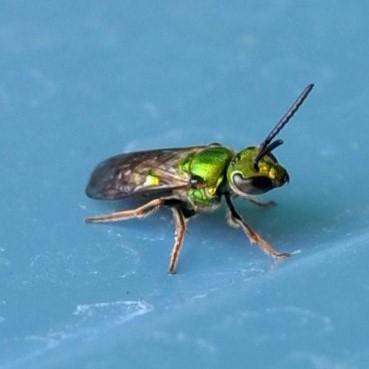
Just for you to compare with the second image, this is the well-known Asian Lady Beetle. You can tell (somewhat, it got into hustle mode when it saw me) by the "W" or "M" shaped design on the thorax. The second one is the Spotted Lady Beetle. I don't remember what the little yellow flowers were since I got this beetle at Kathleen's. The pink and black beetle (I think) was so very small, I think I could see the color pink in it before taking the picture, but now I'm not sure. It was only 1-2 mm long, and scurrying along on a hosta leaf.
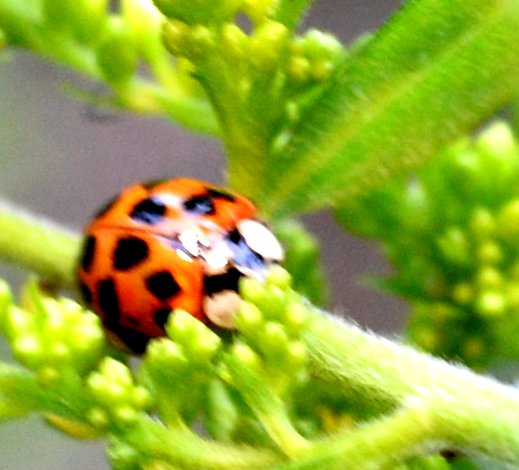
.jpg)
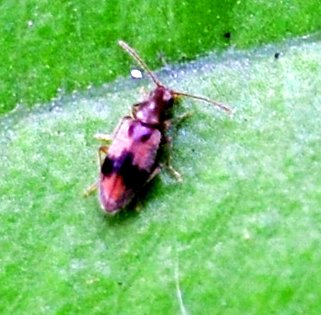
Everywhere the Black-eyed Susan is blooming, the Goldenrod Soldier Beetle has a good chance of being spotted. The Black Vine Weevil is back too, as is this seemingly omnipresent little shiny gold beetle.
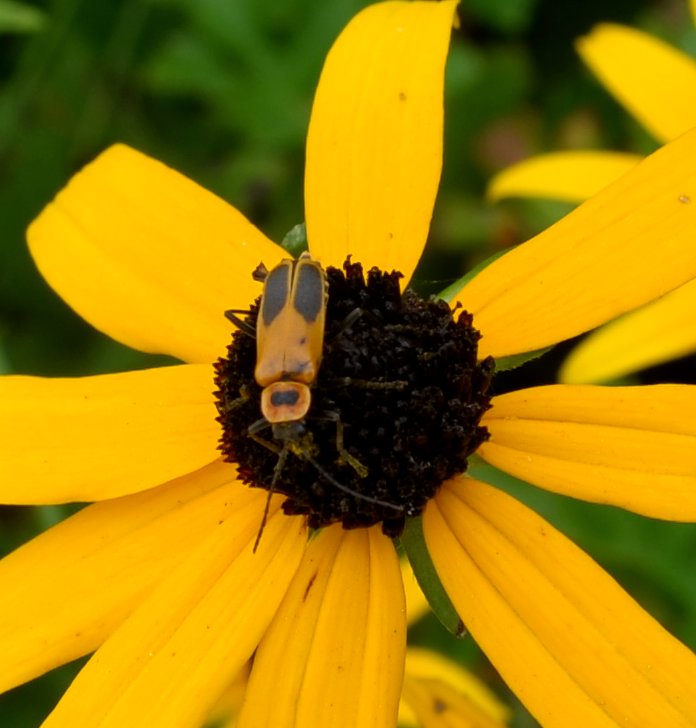
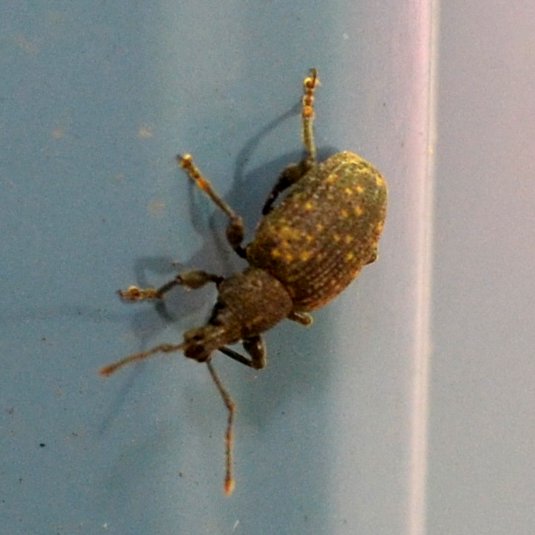
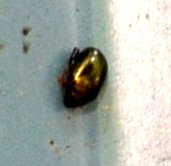
The little assassins are still growing and everywhere you look (all right, that was hyperbolic but not much). I can't imagine why this red-blue candy striper is all splayed out - I've never seen this posture before. Here is the trendy green and red version.
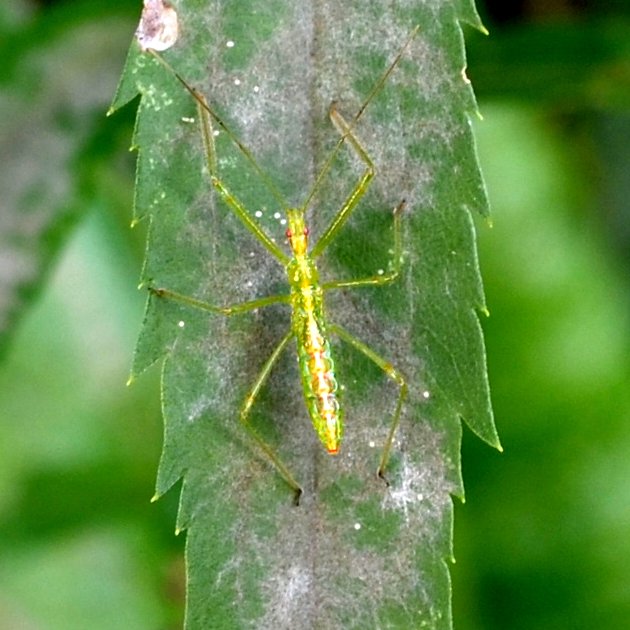
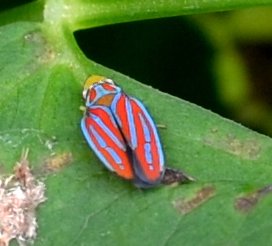
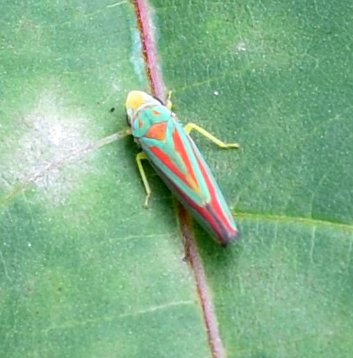
Here is that green leafhopper getting some dimension into its coloration. This Coelidia olitoria adult is having some problems, maybe cramps in his wings. Now he seems to be getting ready to take off. Finally, back to his usual stately tiptoes.
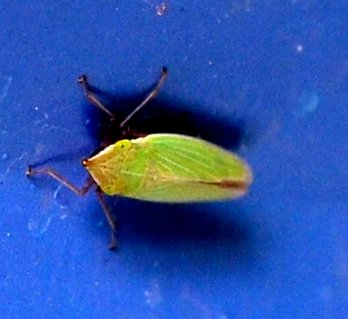
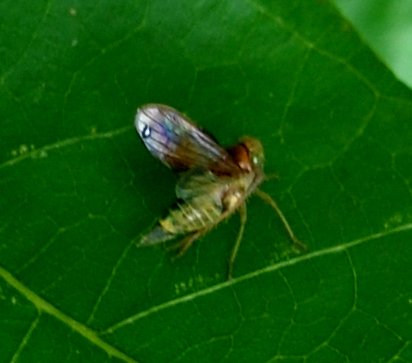
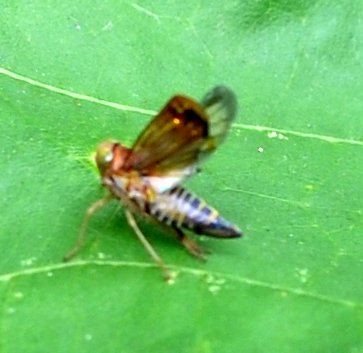
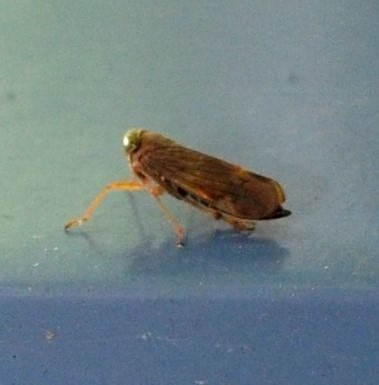
I've no idea what this shiny bug is. December 17, 2020: But you will when you have gotten hooked on Barklice in a year or two. It looks to me like Polypsocus corruptus! This second one is our old friend the guinea pig spittle bug, as is this last one. I wonder if it is a trick of the light that makes one blacker than the other. December 17, 2020: No, the blacker one is the male and the browner the female of the Alder Spittlebug.
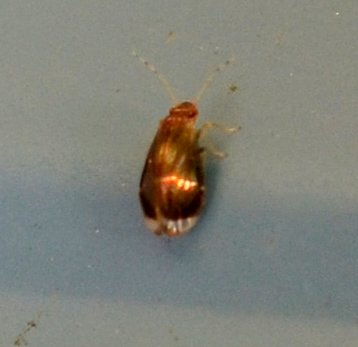
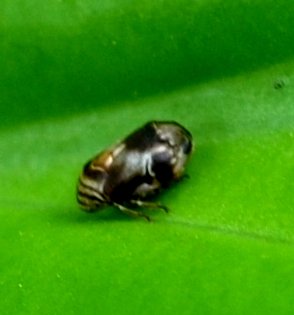
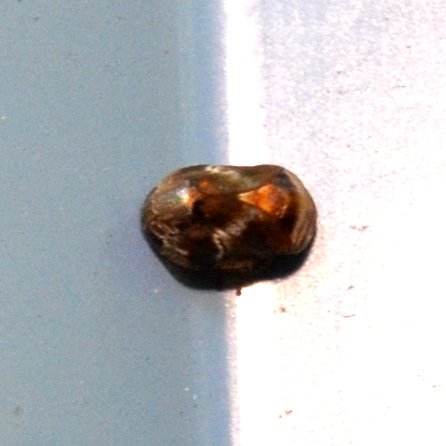
Last but not least, the stink bugs. This little reddish one has been around for weeks. But this week I spotted the first Green Stink Bug. What a lovely creature. I remember the one last November sitting in the autumn sun and just glowing... Yes, it's a trick of the light.

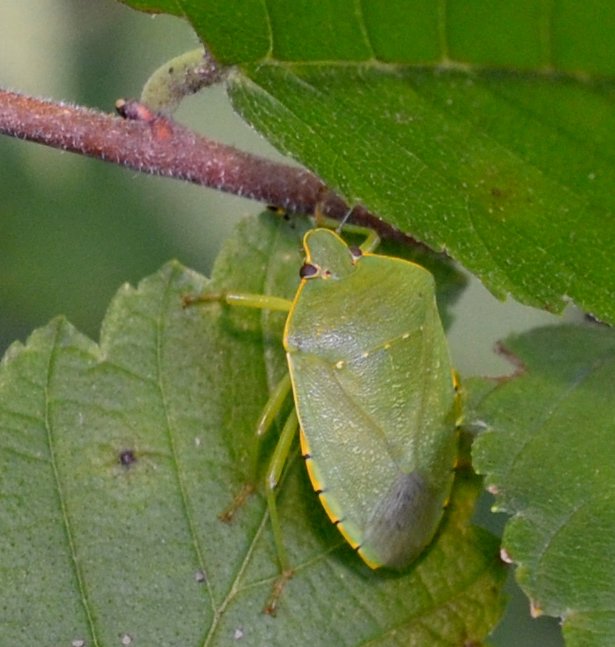
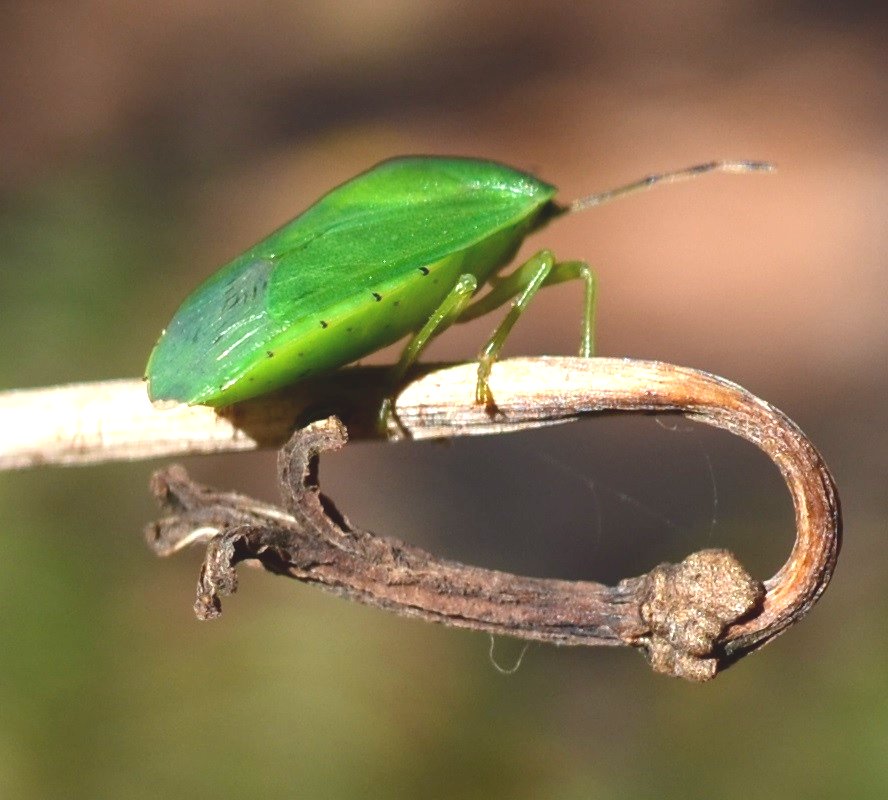
"This mosquito, like most of its tribe, hasn't been too bloodthirsty this year. I shuddder to remember how very hard it was to keep comfortable after being dive-bombed by the mosquitoes last year. NOTHING killed that itch." That's what I said last week, and suddenly the mosquitoes went on the attack. I will have to start slathering myself with repellent again. Ugh. And I don't even have a picture of one of the little dive bombers. Good thing or you would start using your computer screen for a dart board. I wonder when Zika is going to move into some of our indigenous Aedes mosquitoes. They're the ones with the white and black alternating leg pattern. No kidding, with global warming coming faster and faster, it seems to be only a matter of time. It's a tragedy that one can only hope our leaders will take seriously.
After that editorial, the rest of the fly family is waiting to meet you. This little black one looks like so many others, I still haven't gotten a decent idea of what it is called. This little yellow-thoraxed crane fly was the only one of its kind I saw this week. And this one looks almost as if it were painted with water-colors. (Good excuse for bad focusing!)
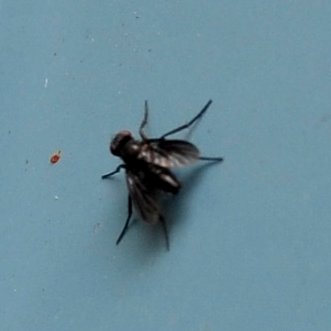
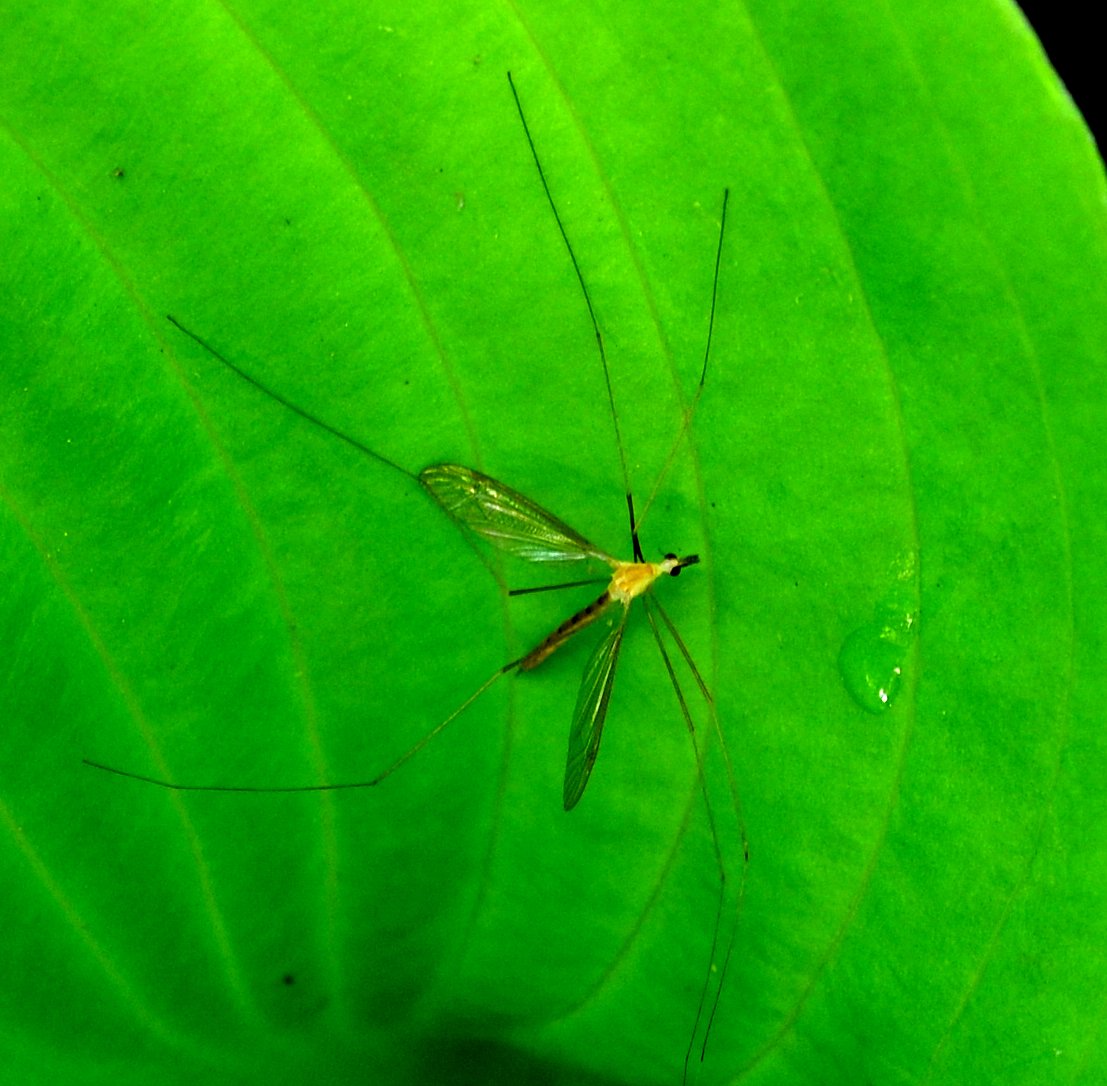
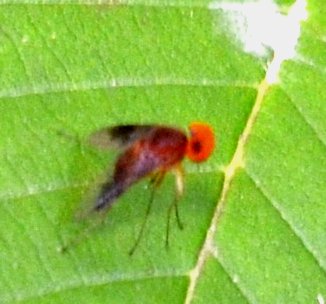
This is what I think must be the underside of one of the hover flies. They are suddenly diversifying - I wonder if they know the asters will soon be blooming. Actually one plant next to the pond is starting to bloom - pretty purple flowers. But more on that later. The next one MAY be the top view of the first one. It is so classically hover! The last one on the phlox is a different kind.
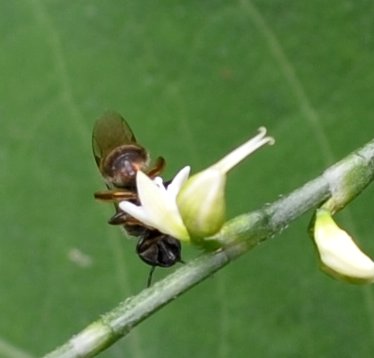
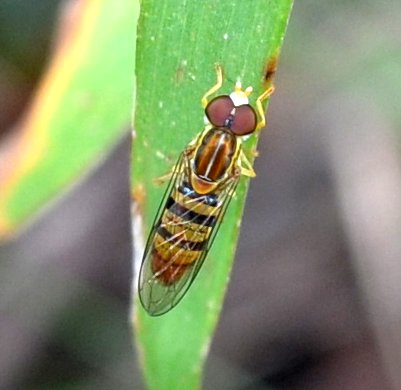
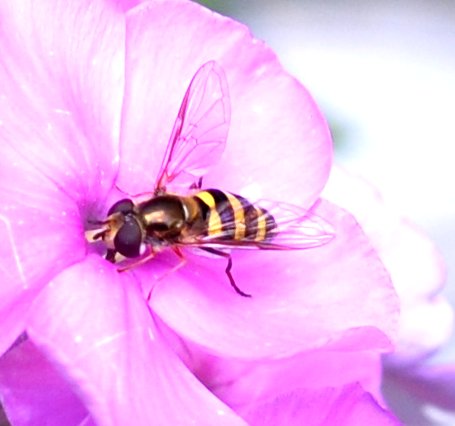
This hover fly (Toxomerus geminatus) is one of the ones that have been hanging around (ha ha - get it?) for most of the spring and summer. The second one is in the same genus (Toxomerus) but a separate species (politus - we first saw it last week). The last one may still be T. politus, but the light has changed the colors to grey and white-ish.
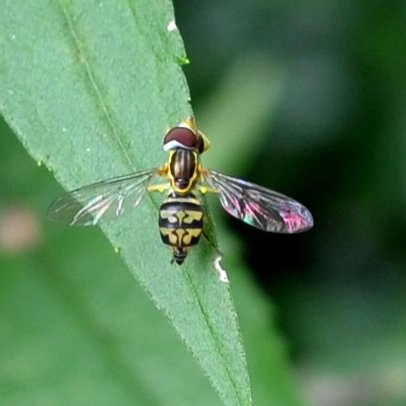
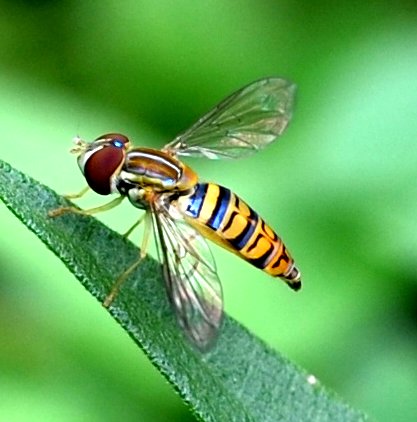
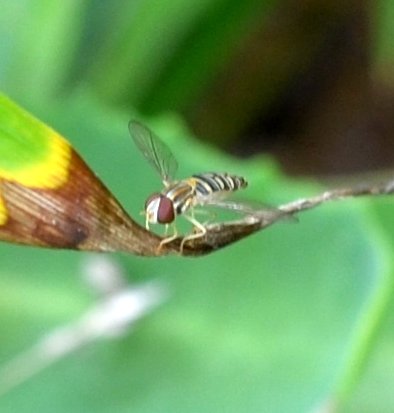
Here are a few more pretty flies. The first two are iridescent long-legged flies. The third is a mystery to me. Have you noticed how often these pretty pictures show a fly with no neck? The head seems totally separate from the rest of the fly! In fact, the head is just two big eyes!
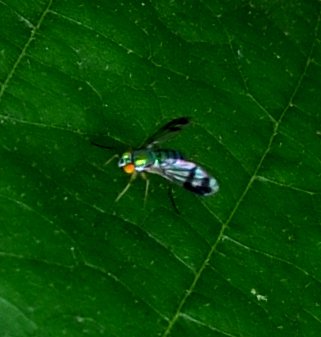
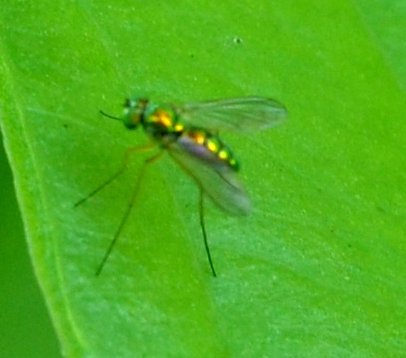
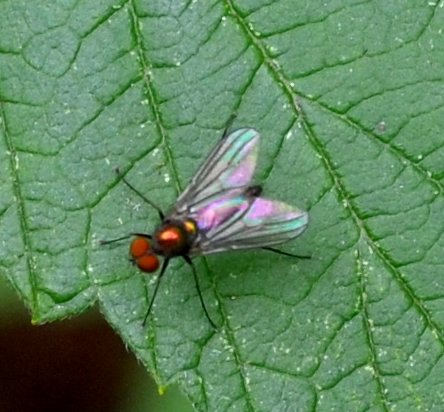
Here is that scorpion fly again with its rolled-up tail; one of the marsh flies; and another of the marsh flies, this time with a lot more black dots on its wings.
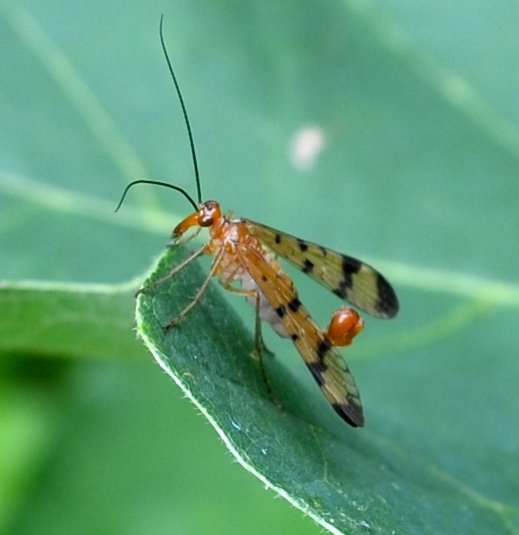
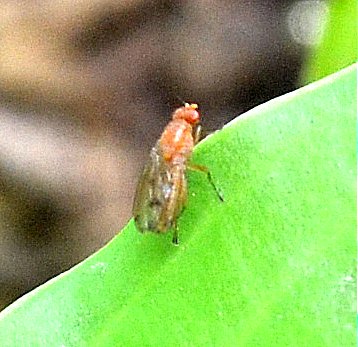
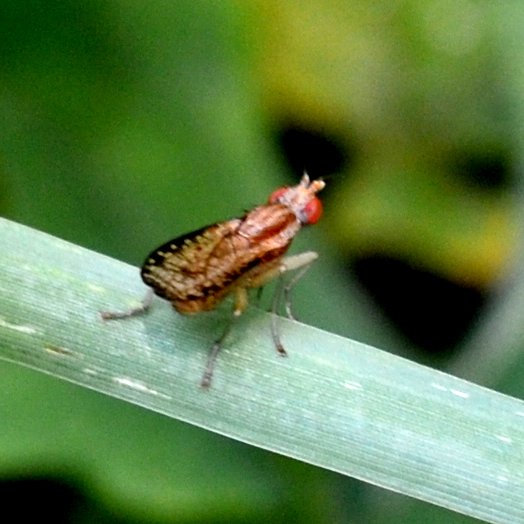
Some more pretty pictures, mostly of flowers! The Stella D'Oro Day lily is reblooming, a rarity for my yard though advertised as a regular feature. This is the feral cat that spends so much of her time in my yard. She is beginning to realize that I am a permanent fixture of the whole garden. Finally, a view of the deck flora. In the distance behind the red hibiscus (normal sized) are some of the blossoms of the tall Common Evening Primrose. If you get up early, you will see them blooming from the night before, but they will go away as morning progresses.

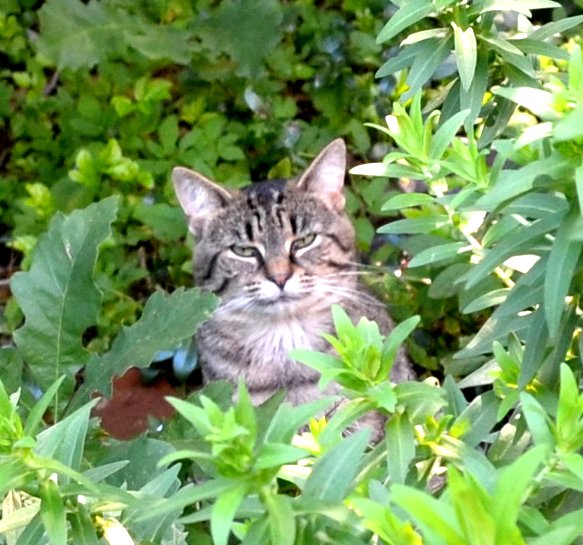
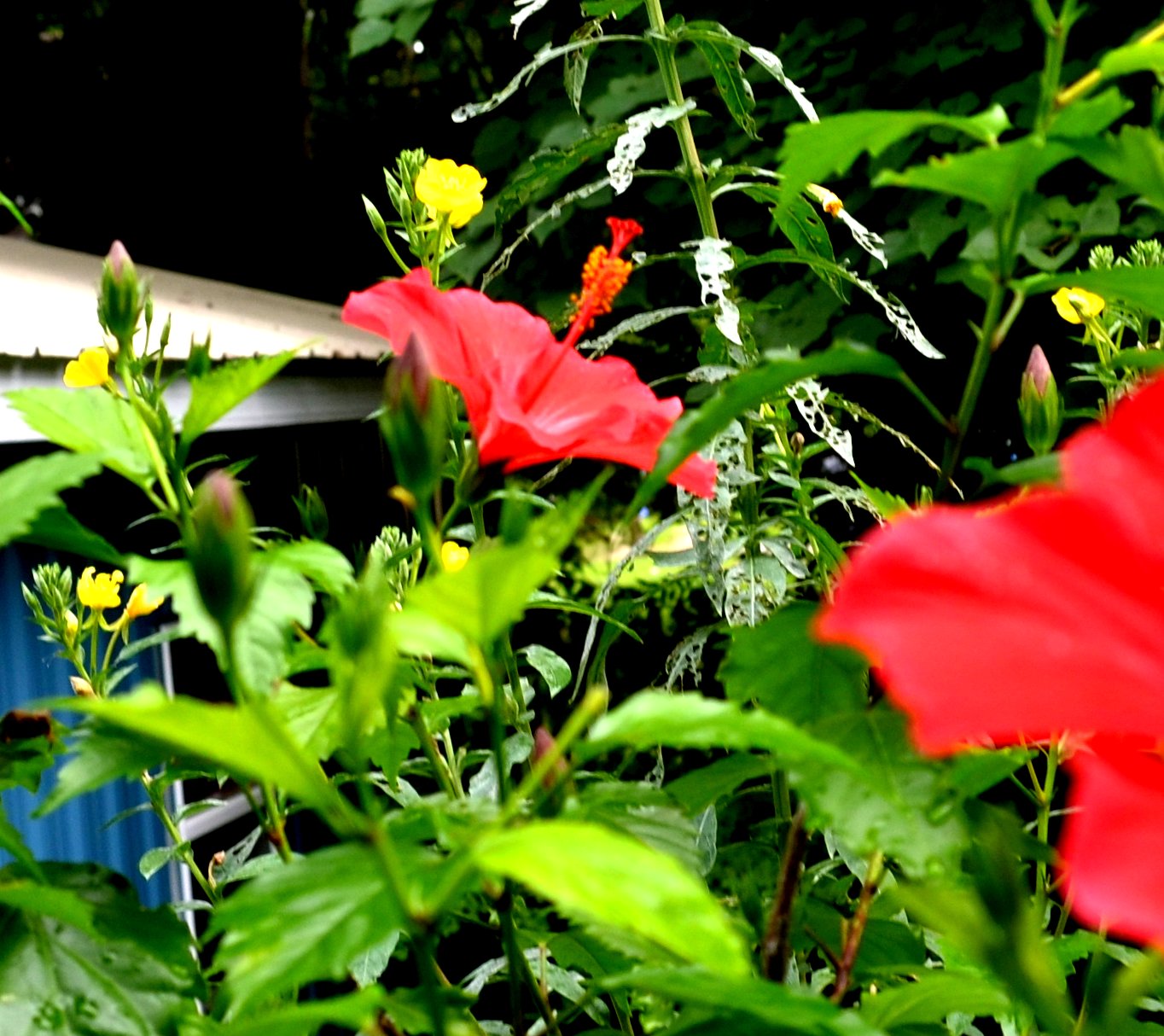
I only saw one tiny Grey Tree Frog yesterday. This one was still only about an inch long. But the Amercan toad came very close to being trod upon - she had the sense to get under something that I couldn't walk on. Still sticking fuzzily to alphabetical, the Goldenrod is finally blooming in small patches. The wasps are very much attracted to its bright color and there must also be some wonderful nectar to attract them. The crab spider and the mosquito or other small small bug are just a backdrop for the goldenrod.
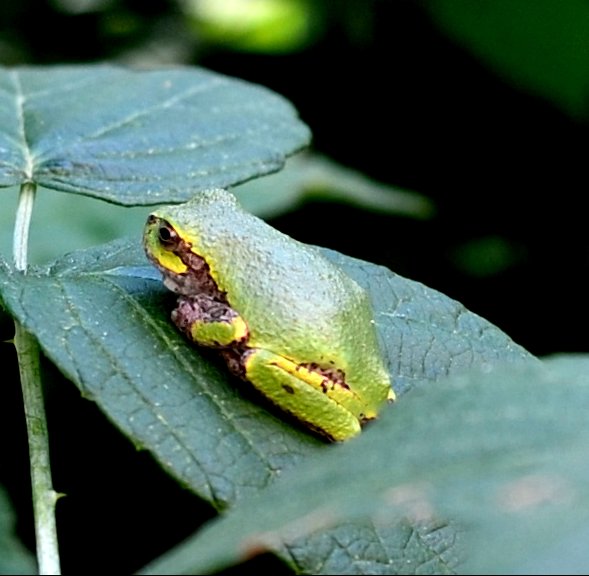
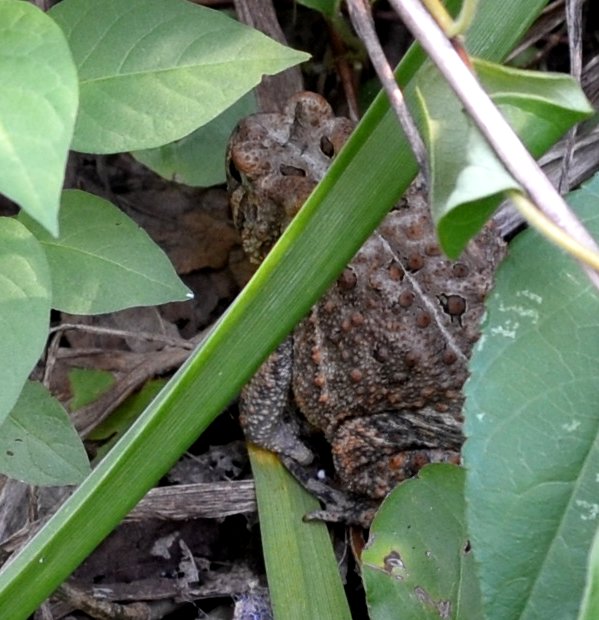
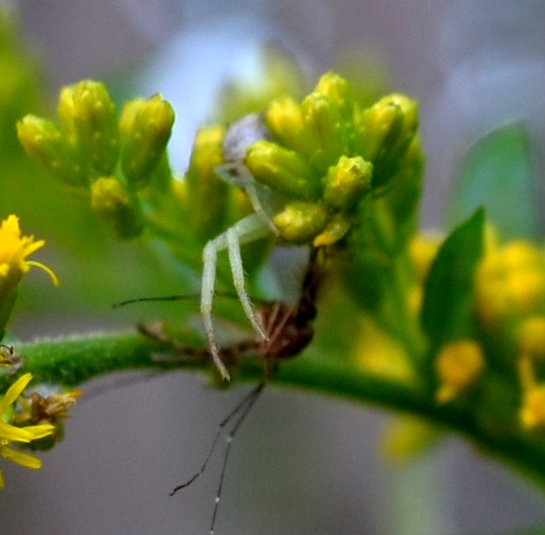
The harvestmen are constant companions - there seem to be in my yard only two or three different patterns. Sometimes they are in different colors though.
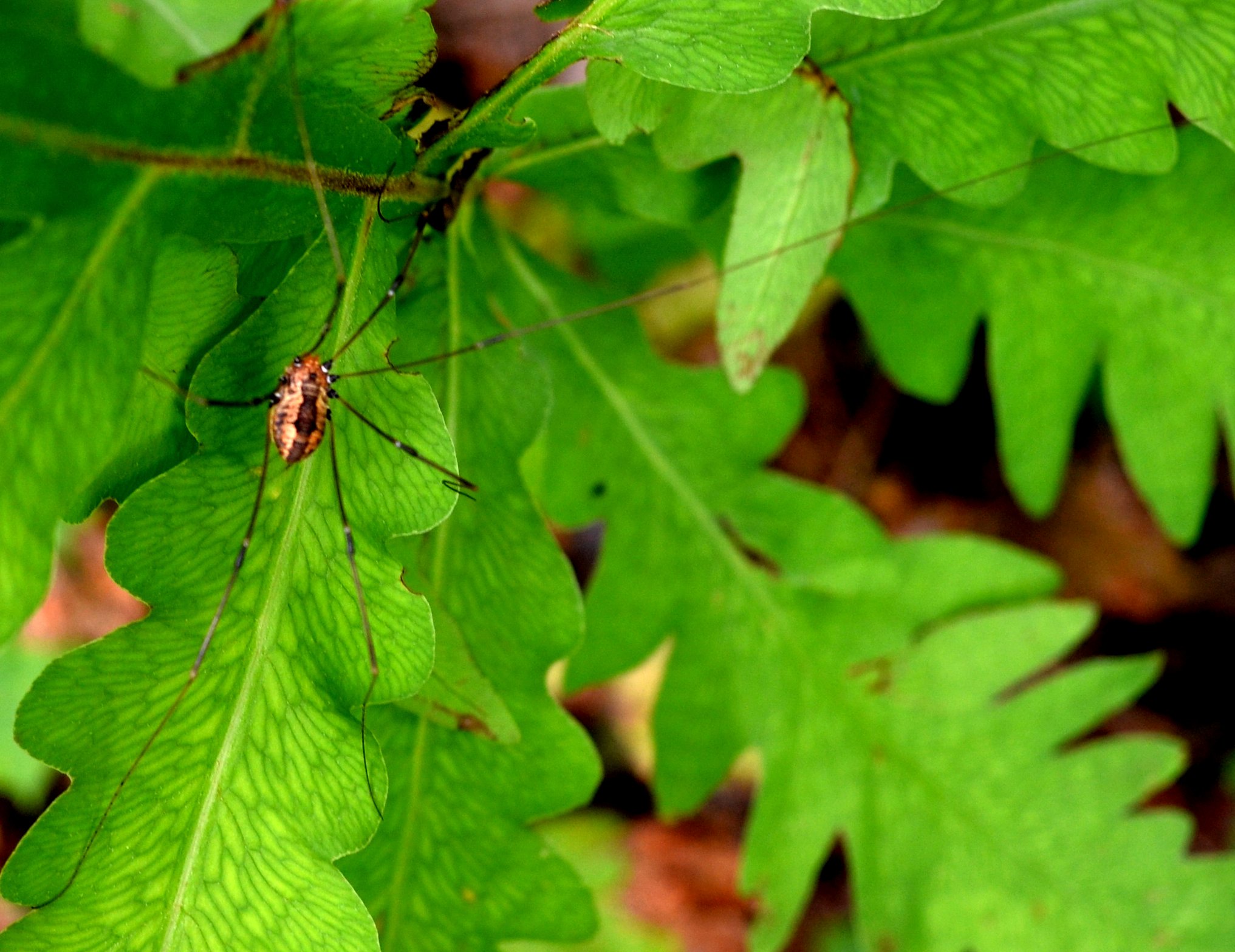
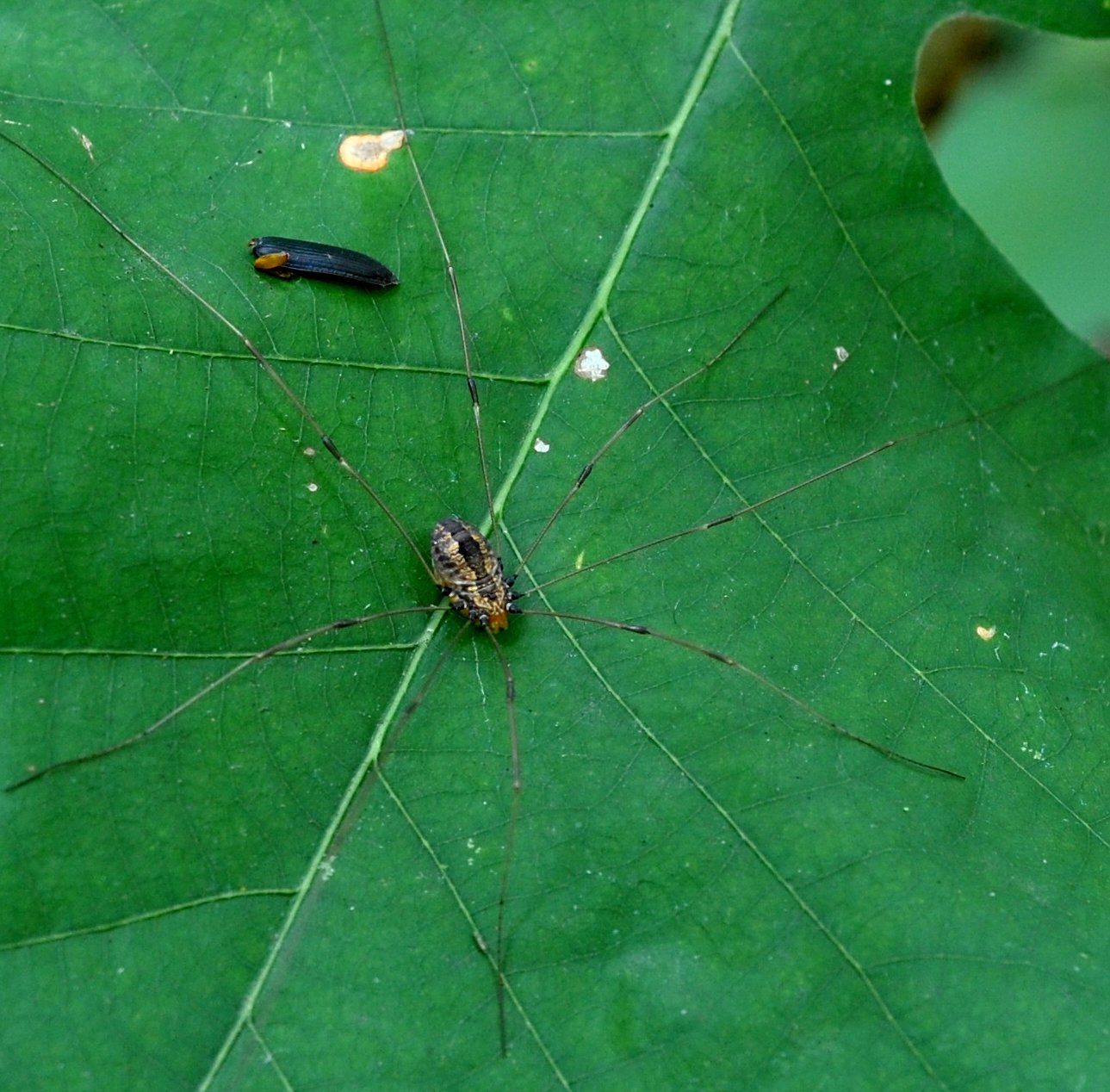
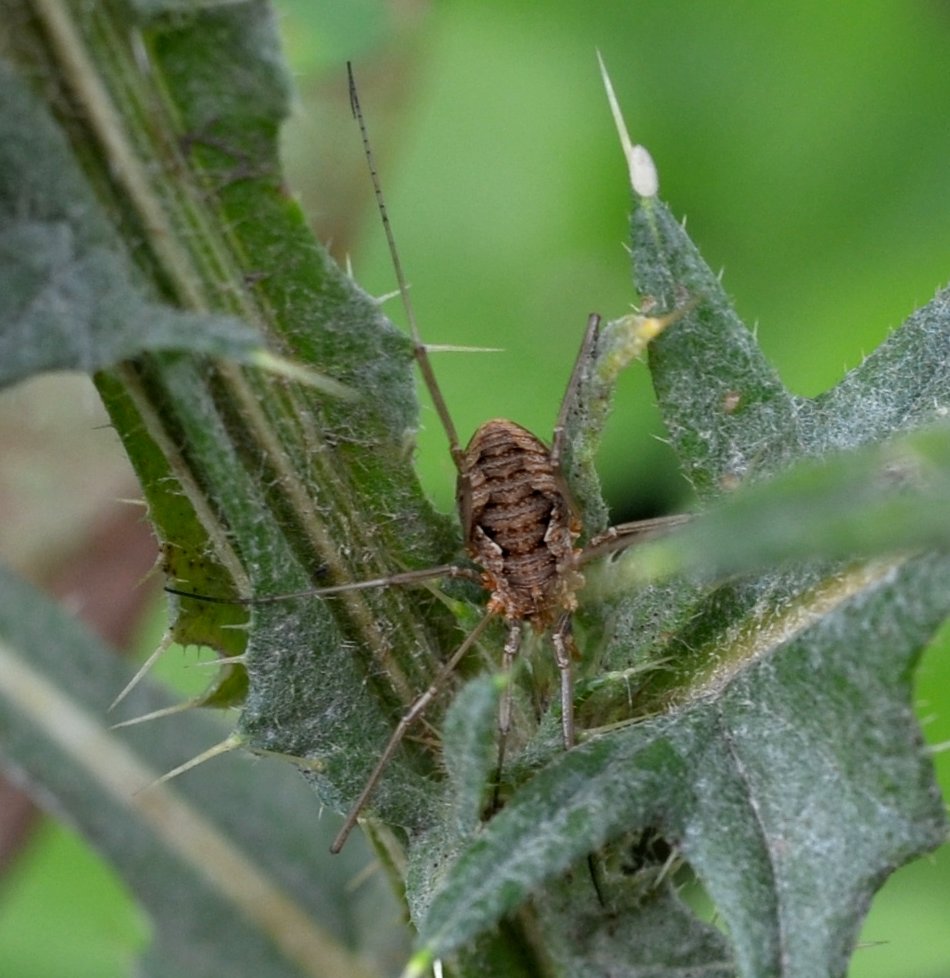
You know it is going to be something wonderful when Kathleen calls to say that the thing she has been on the watchout for (something that I haven't seen in my yard for ages or ever) has appeared. Remember last week when she found the brown and green mantis? Well, this week she found an all-green version of that mantis - apparently called the European Mantis (Mantis religiosa) AND a Walking Stick Insect, which seems to be a Northern Walkingstick (Diapheromera femorata). Look how it becomes more like a stick when it folds its front arms and antennae out forward.
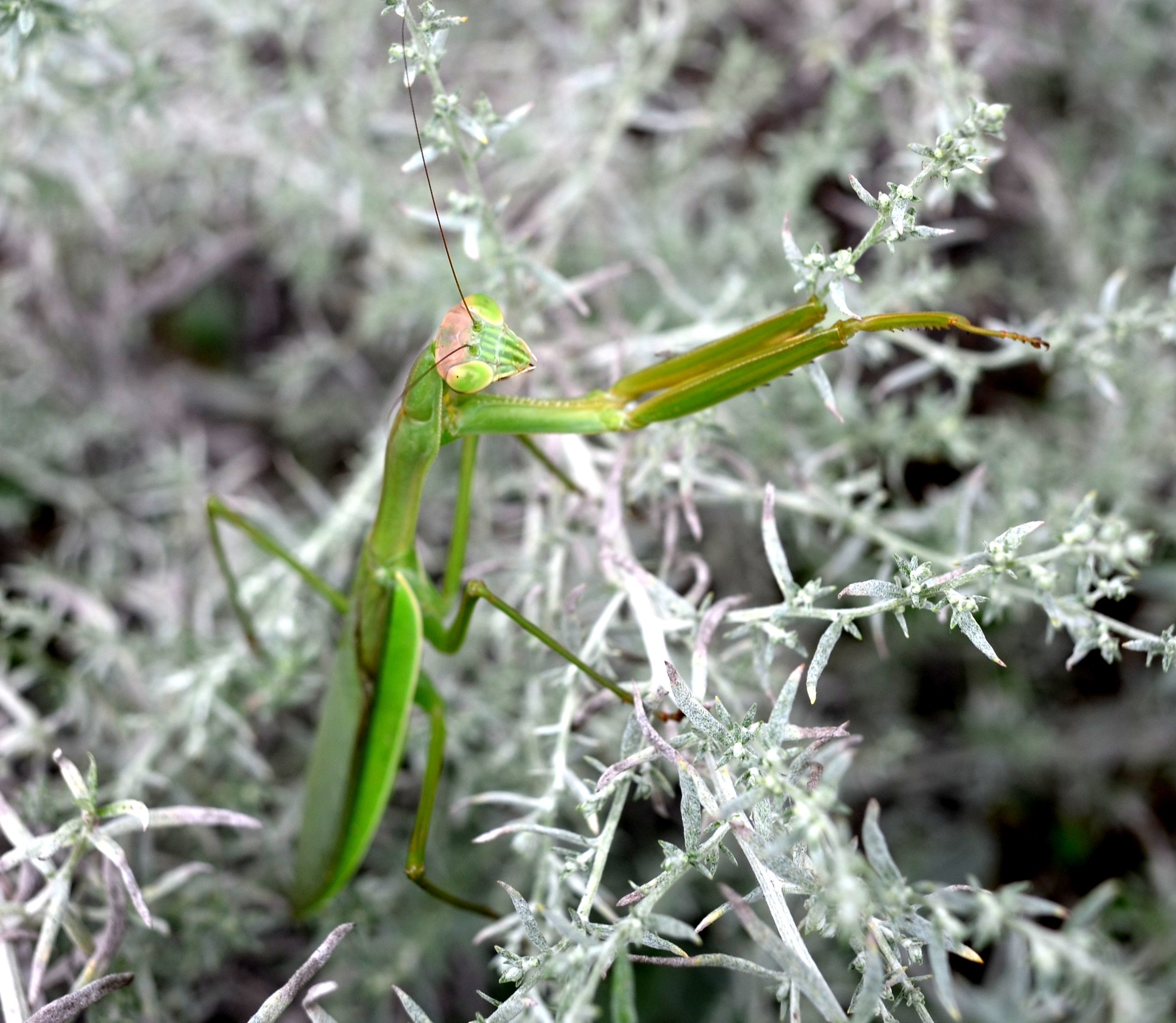
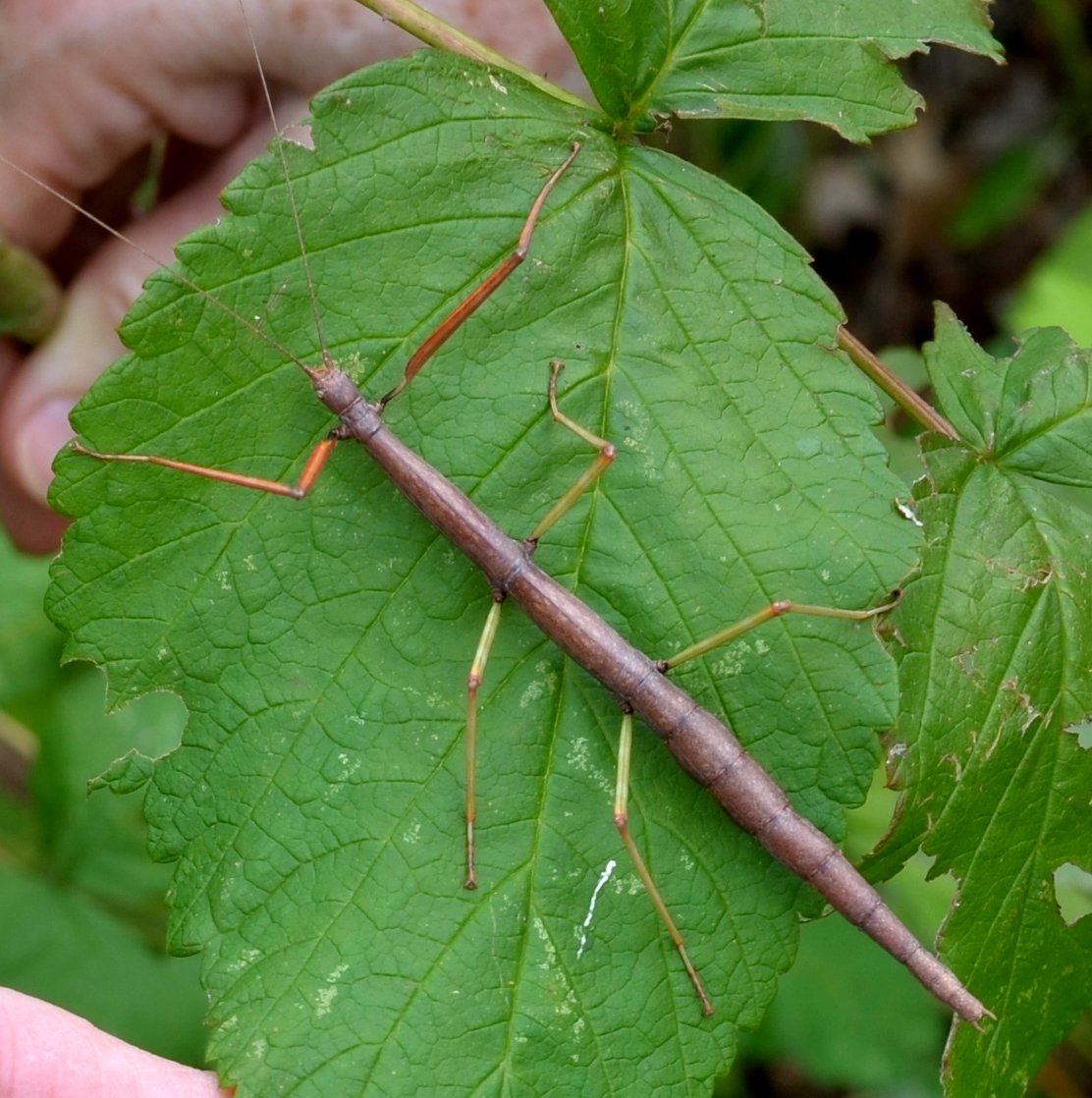
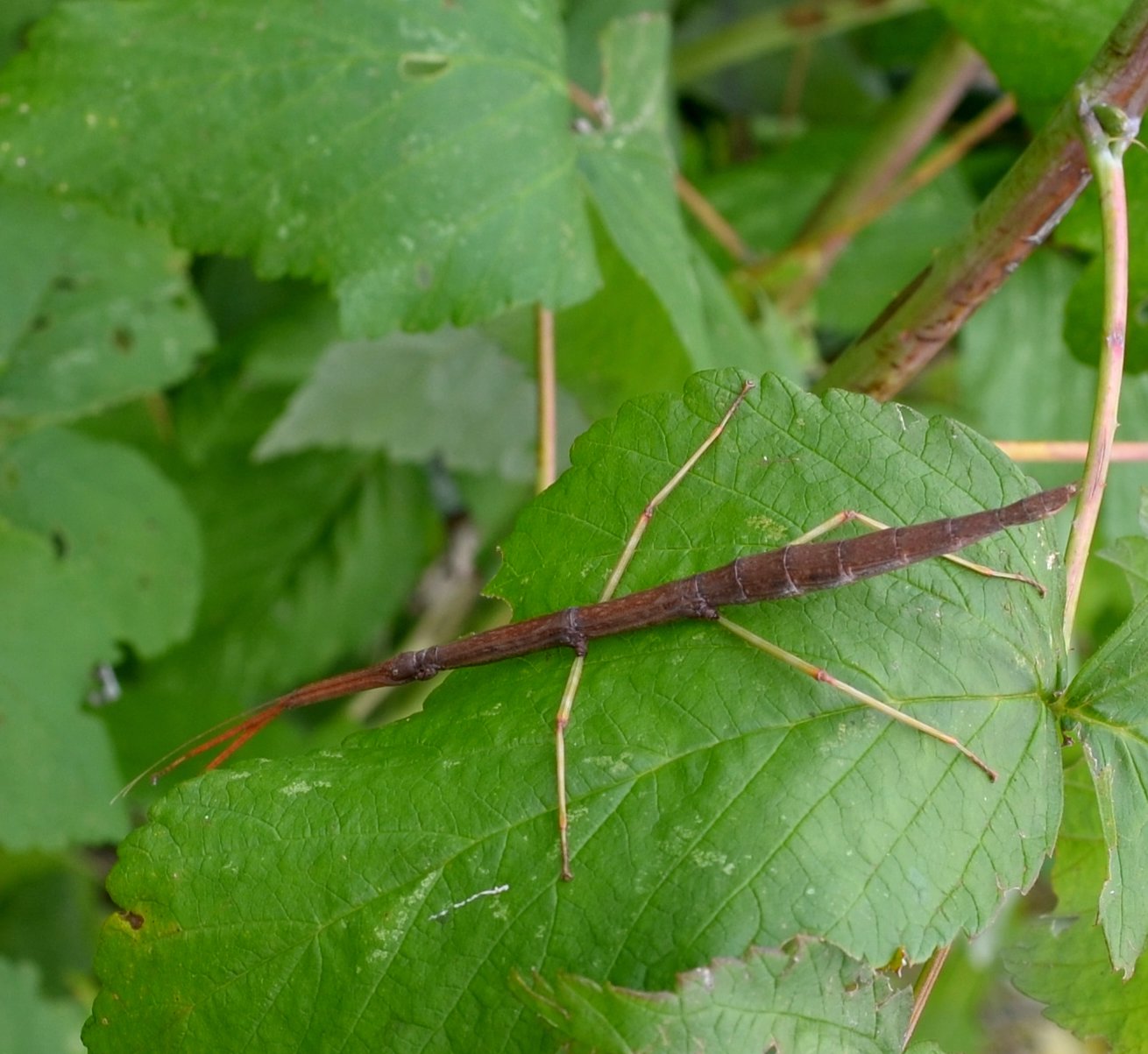
This time Kathleen was having a battle with the Tobacco hornworm caterpillar. This is the larval form of the Carolina Sphinx (Manduca sexta). Here is a picture of the lovely adult, which mostly flies at dusk and is able to enjoy the long throat of the trumpetvine. Anyway, she actually planted her purple nightshade, unlike mine, which seems to have gotten planted by natural means. I brought home seven fat green caterpillars and let them look on my nightshade. Other people have let me have their caterpillars because they were on tomatoes or other nightshades. Here are some of them in their adoptive home. I suddenly remembered a couple of years ago when I found little bits of damp clay in the shape of a cookie-presser cookie with 6 lobes arranged around a central lobe. If you have just joined this illustrious group, that is the shape of the poop of a hornworm. See if you can guess how the hornworm formed it and with what care.
 Manduca sexta 8 26 16 3.jpg)
 Manduca sexta 8 26 16 2.jpg)
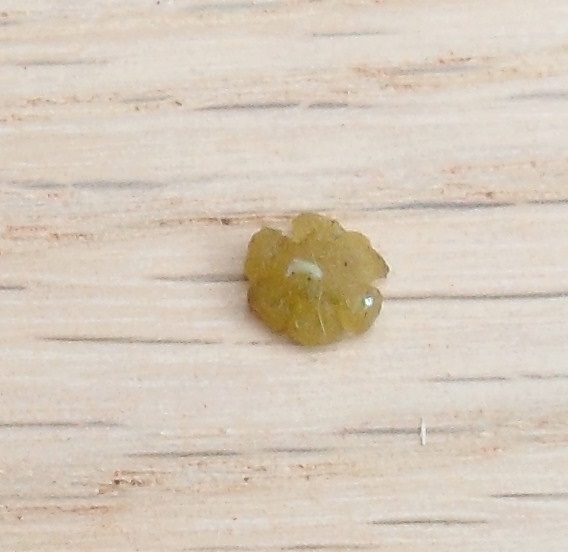
Besides the Sphinx caterpillars, there were a few other little moths, most of whom are unnamed. The first one isn't named yet, and the second is one we caught for bugguide some time ago. The third one fooled me at first into thinking it was a leafhopper.

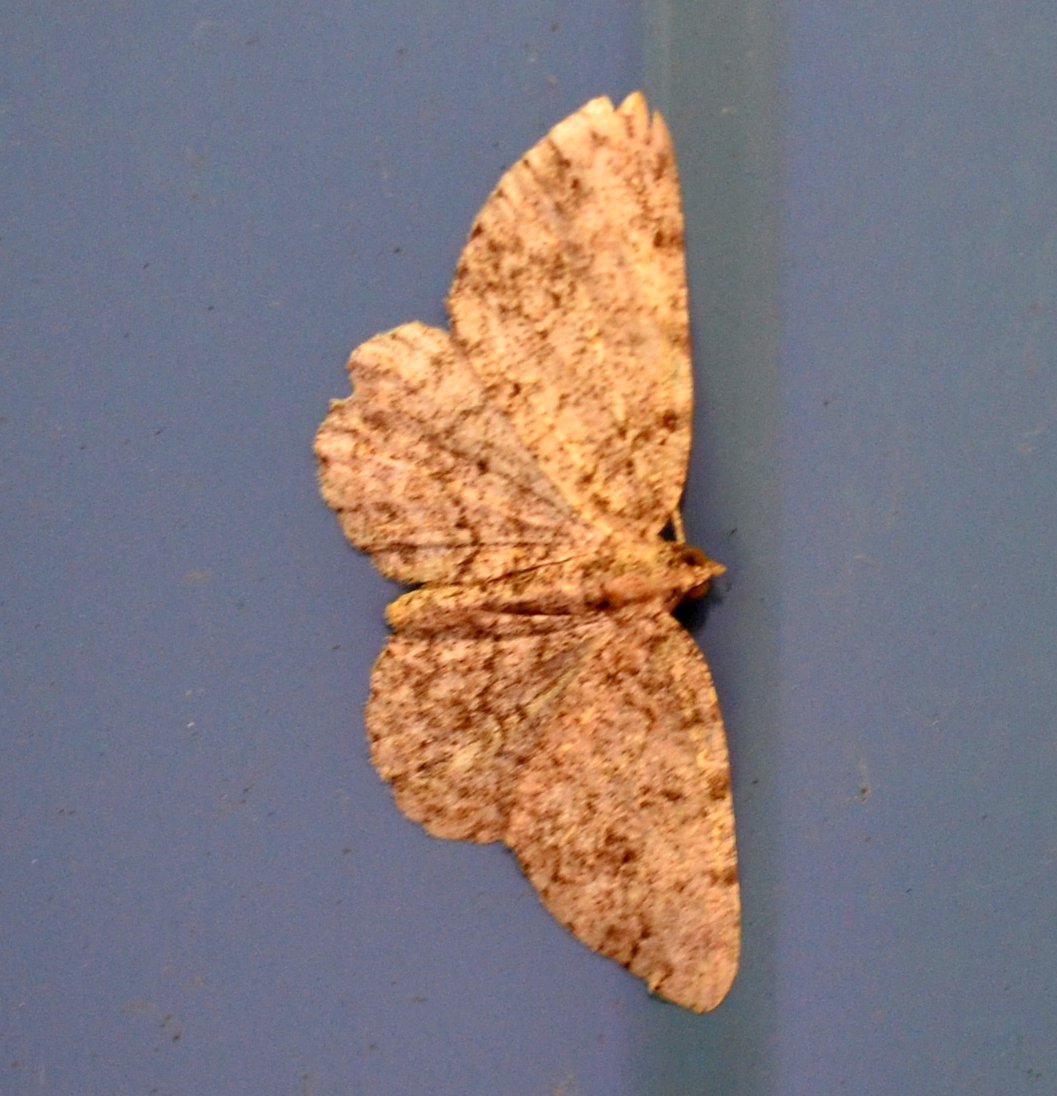
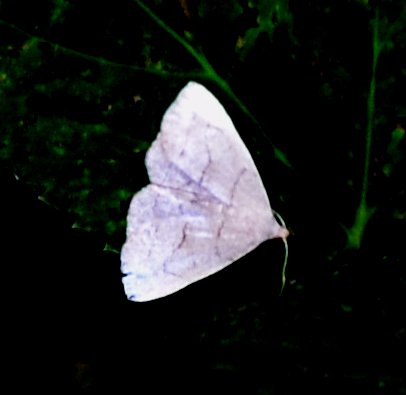
Just enough more moths to fill another row of pictures.
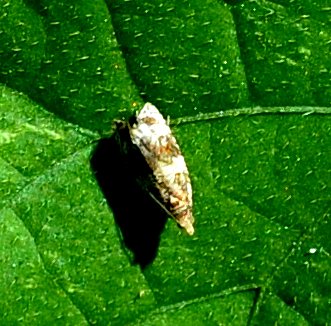
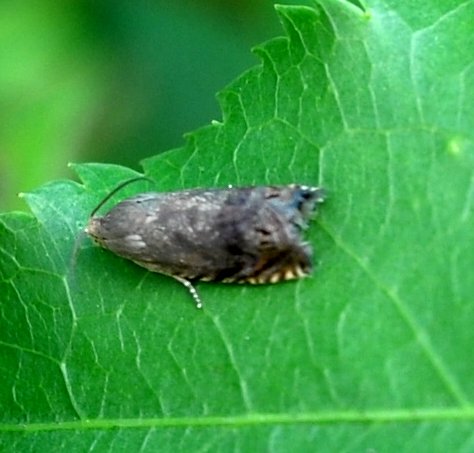
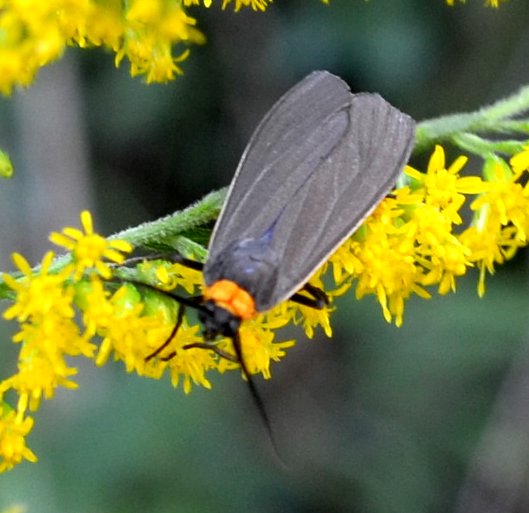
Here are some of the Orthopterans we've seen this week. I believe the tiny cricket was seen at Kathleen's. I've discovered a great way to find a grasshopper. Look around your yard for something close-ish to a color exhibited by one of the grasshoppers. Often the hopper will be sitting on or near that spot - quite nicely camouflaged. Note how many colors and patterns exist within the Melanoplus differentialis - makes identification difficult. Since the females don't seem to have an obvious ovipositor, one needs to have checked a lot of underwear in order to spot the sex.
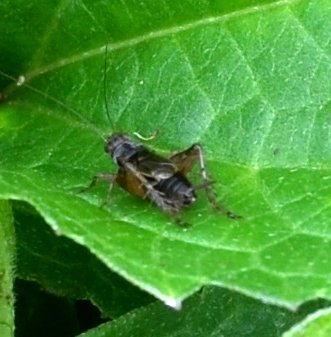
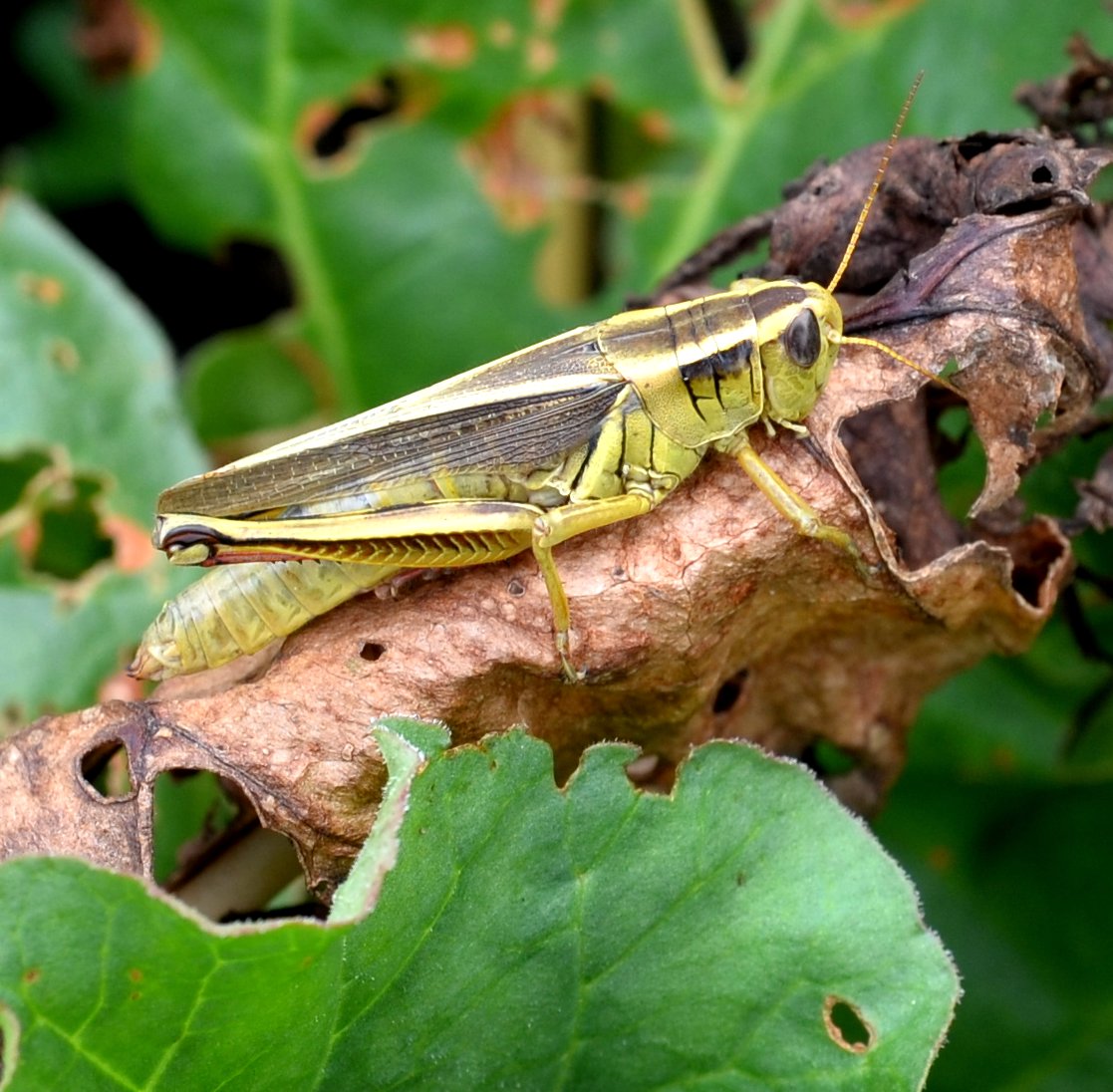
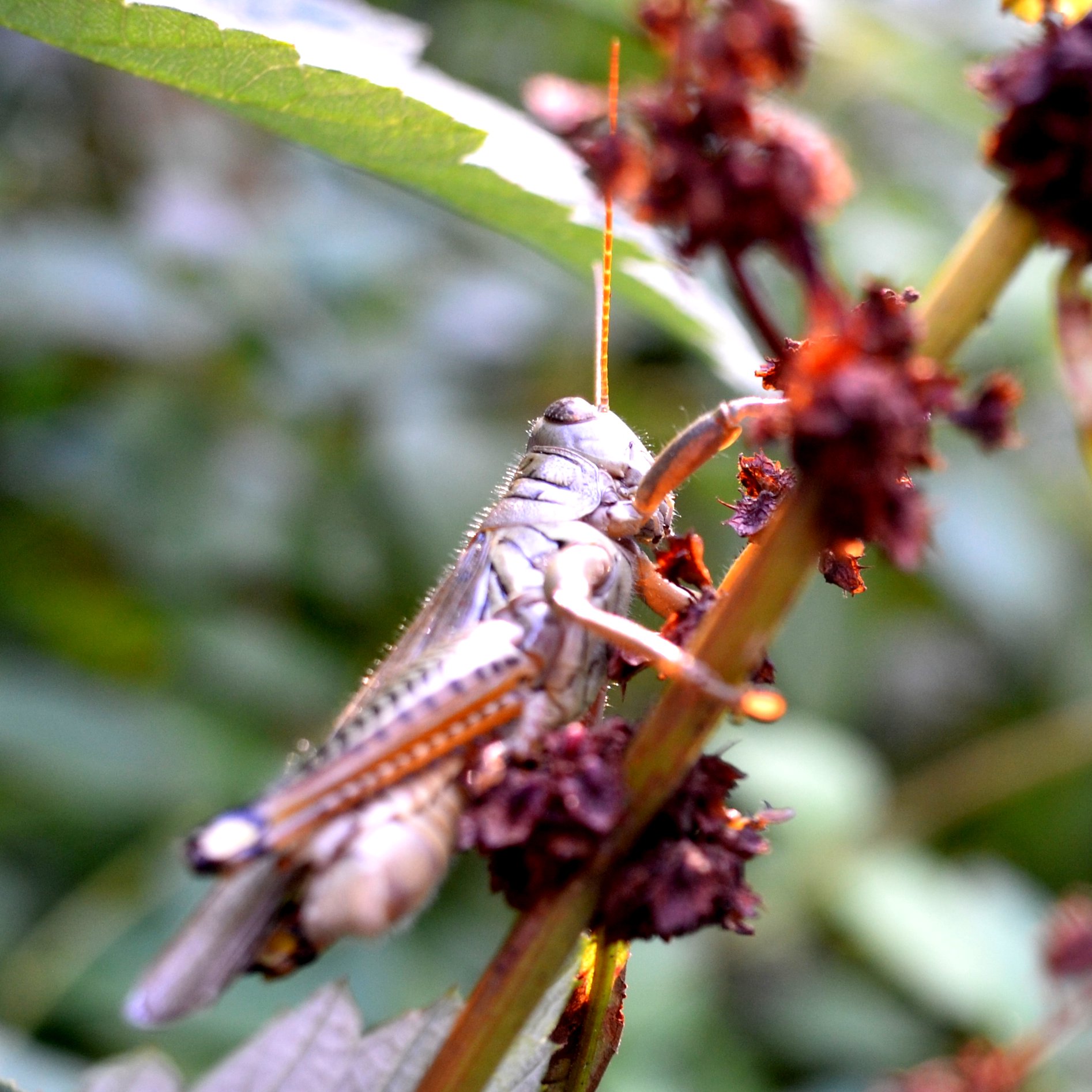
Here are a few more supposedly Differential Grasshopper [nymph]s.
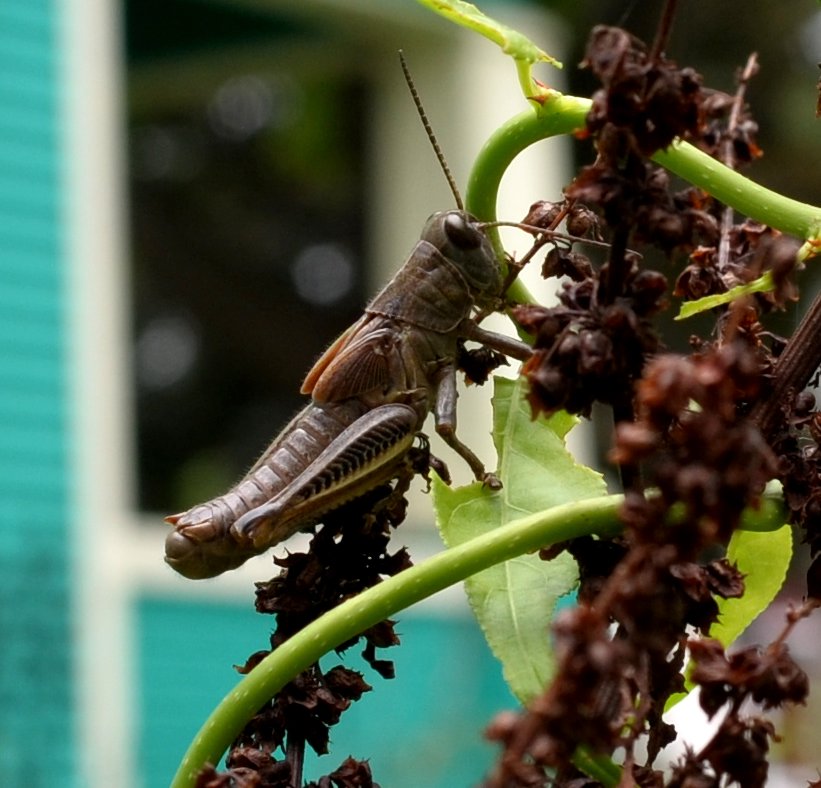
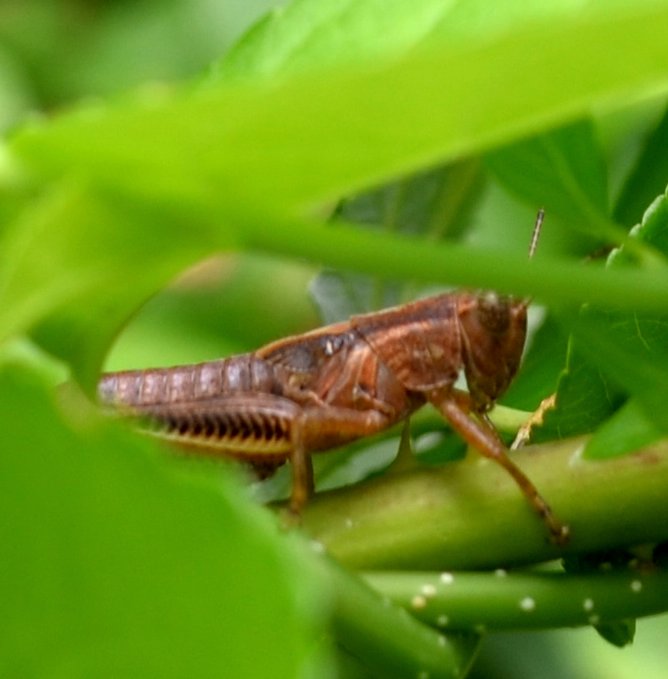
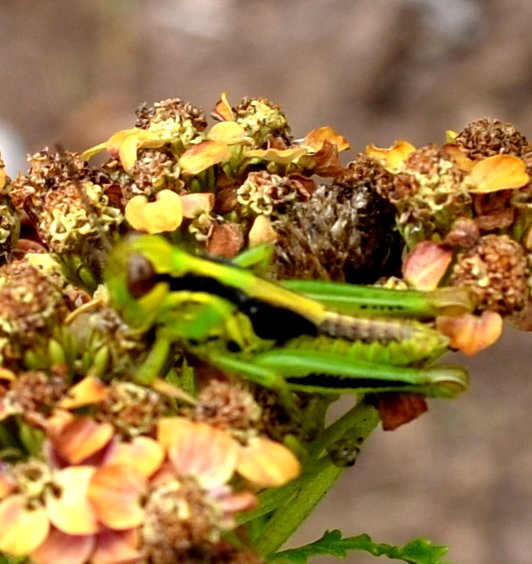
Here are some other singletons: a mayfly emerging from that tiny nymphal skin: a snail in the asters; and what seems to be a rove beetle with the shortest skirt ever!
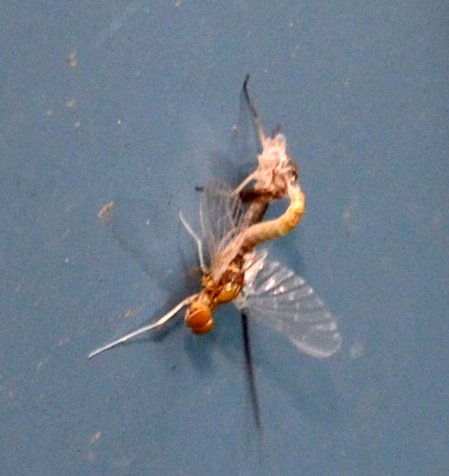
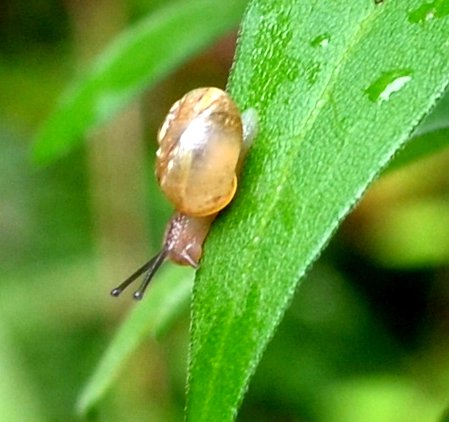
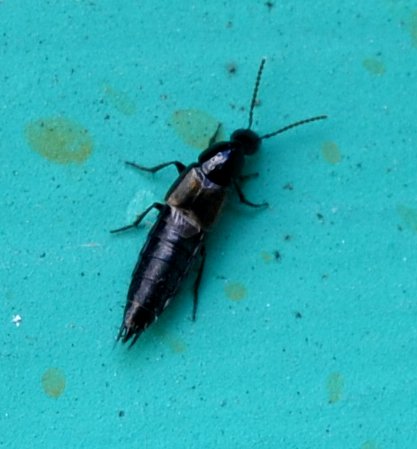
Some more amusing (or not ) items: mysterious hyper-growth of what seems like leaf tissue at the nodes of an oak tree - probably stimulated by some creature, but likely NOT the one that makes oak galls. Any suggestions, Dan S.? We still have some poison ivy - the poison ivy sawflies must have left some from last year - haven't seen a single one this year. The thistle flowers are so beautiful and attractive to bees, but when they have all popped their floaters it makes a terrible mess. My front porch looks as if a cottonwood tree had attacked it.
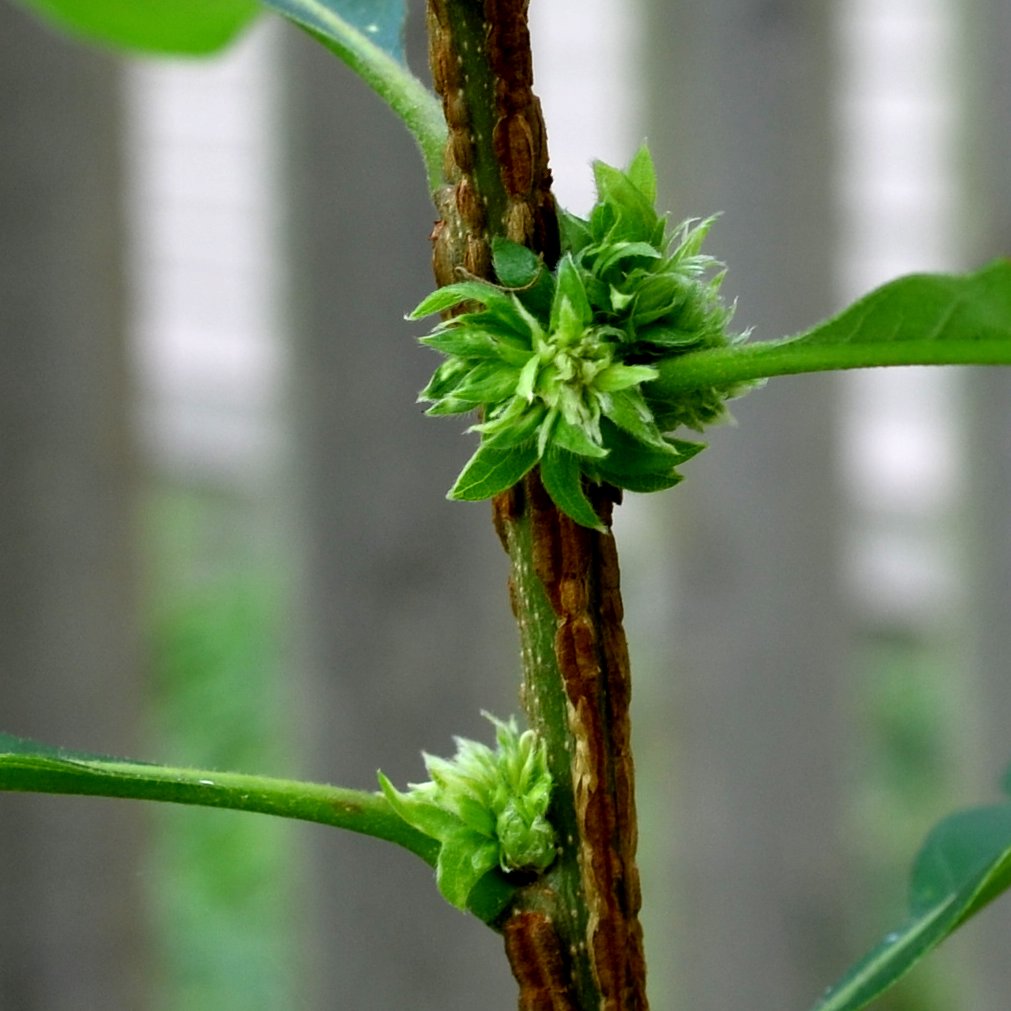
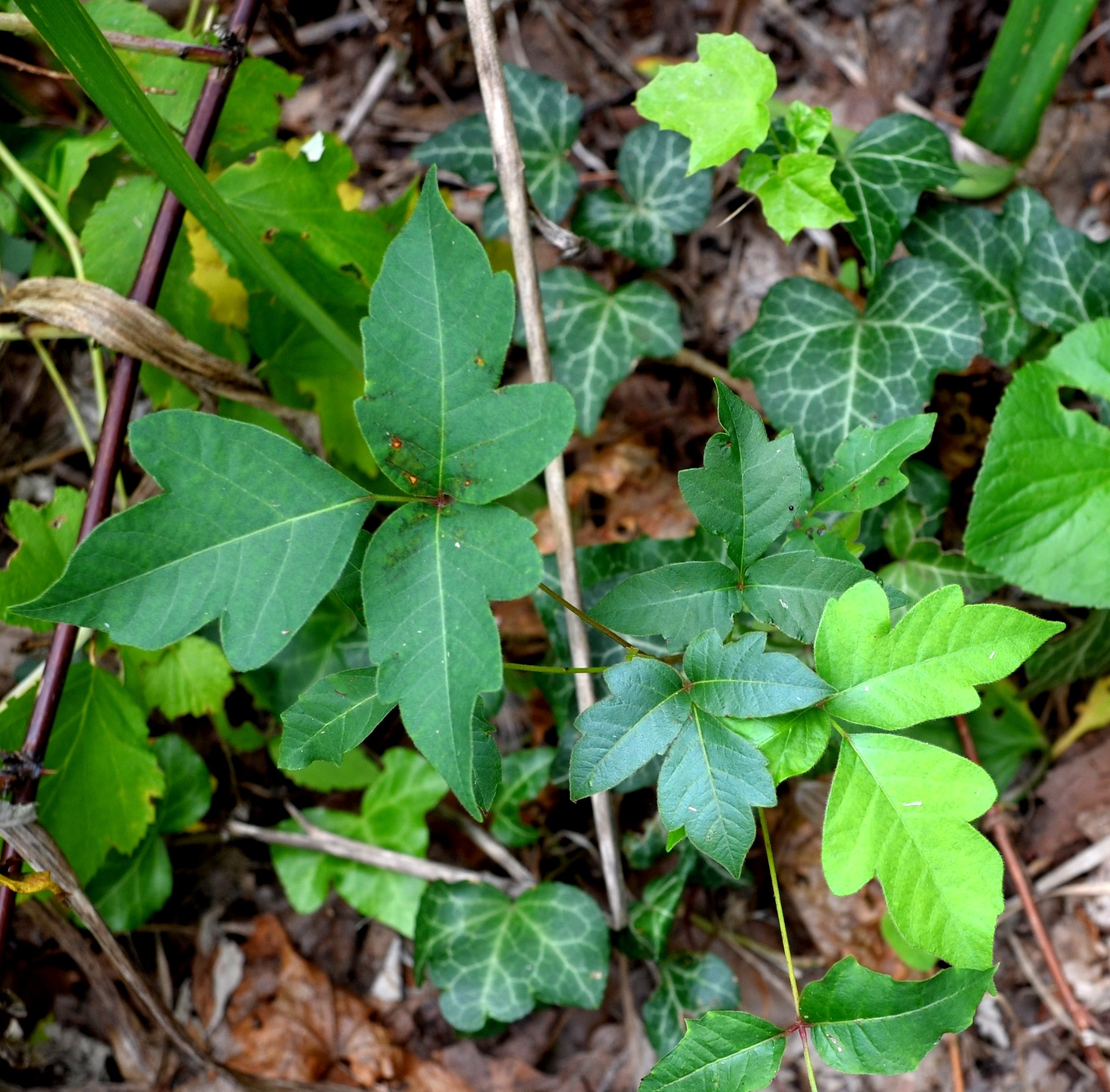
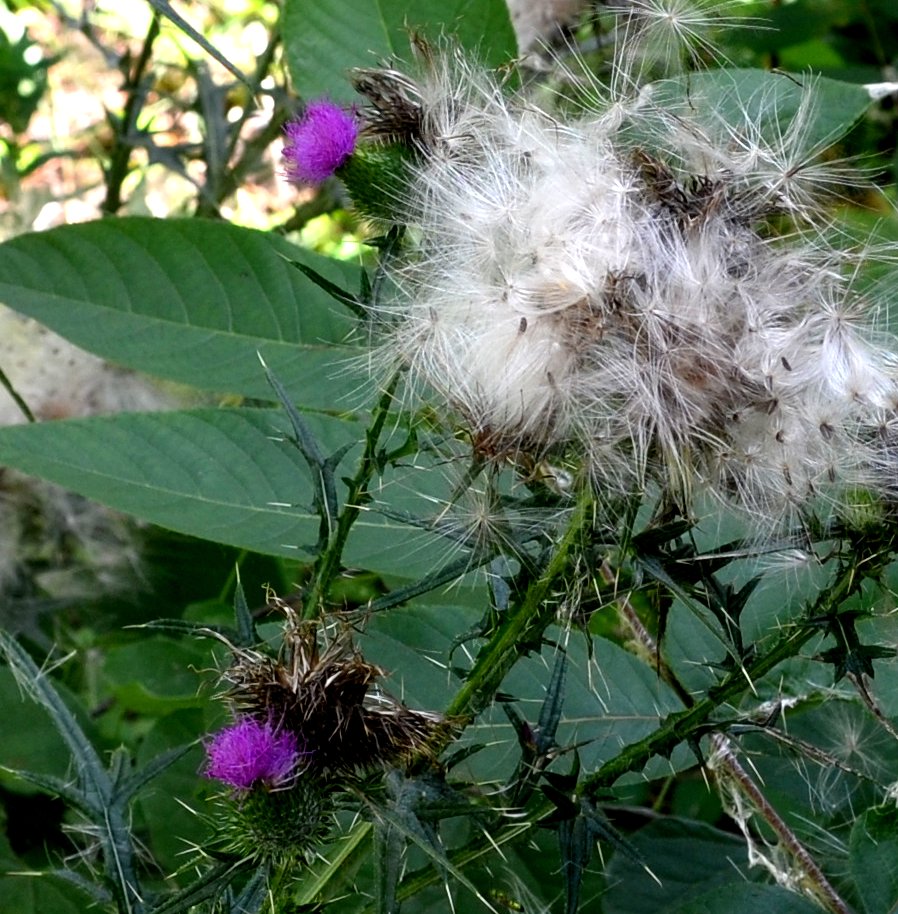
Well, let's see some of the spiders of the week. I suppose you are bored to death of common house spiders, but here is one either with prey or maybe making a cellphone call. The most common spiders this week were the grass spiders and the Ghost spiders. The Ghost spiders can usually be spotted for their black or brown mouths. The grass spiders are all over the place now, in every imaginable size, from tiny babies to great big ones. They usually are found in a "sheet" web, not an orb, their tails are sharply pointed, and their nests may contain scads of left-overs.
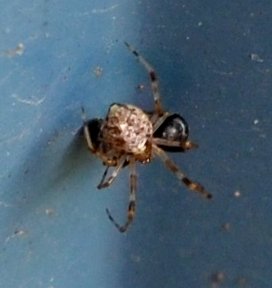
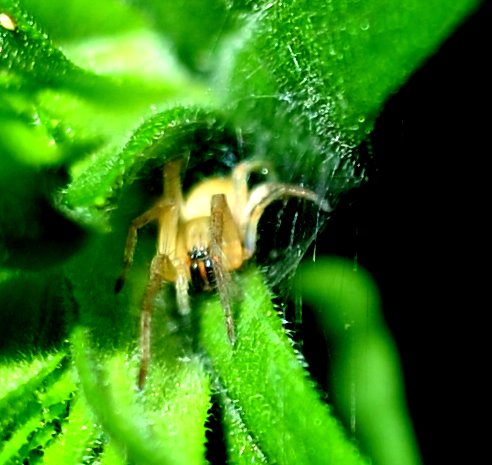
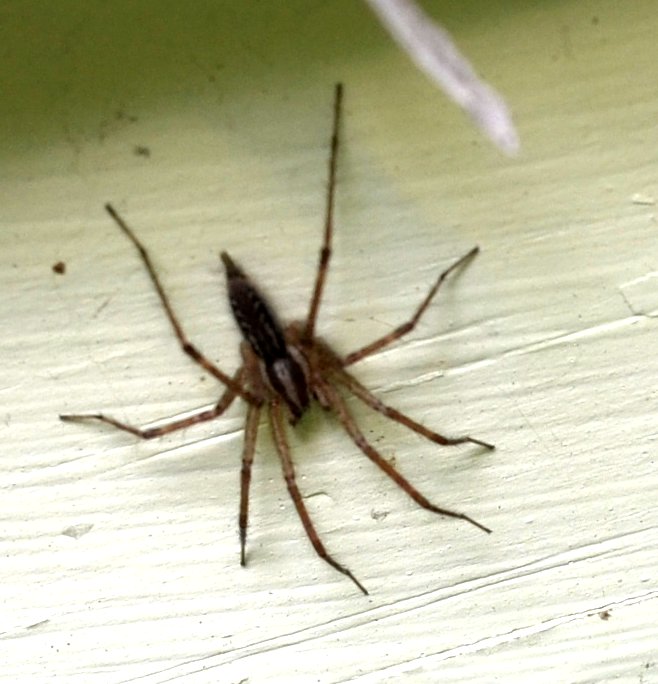
I hadn't seen a long-jawed orb weaver for some time, but the other day there it was on the shop outer wall. Crab spiders are really very common and I expect more of them in the flowers of asters once they get going. I used this one before to show off the gold in the goldenrod. The little insect or spider doesn't seem to see the Northern Crab Spider that's reaching out for it. One of the many lovely things in Kathleen's garden was this garden spider with its signature landing pad of thick silk.
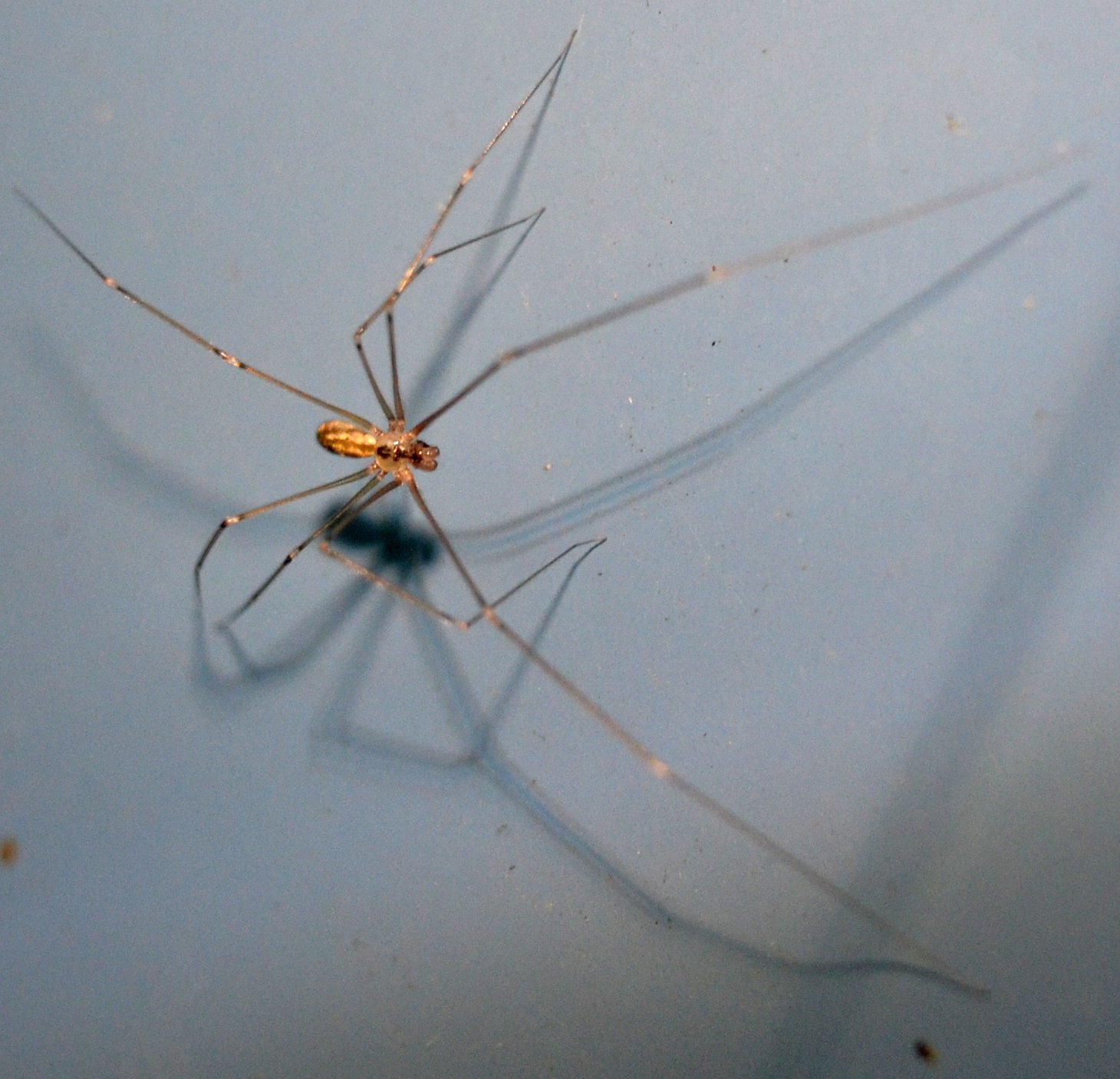

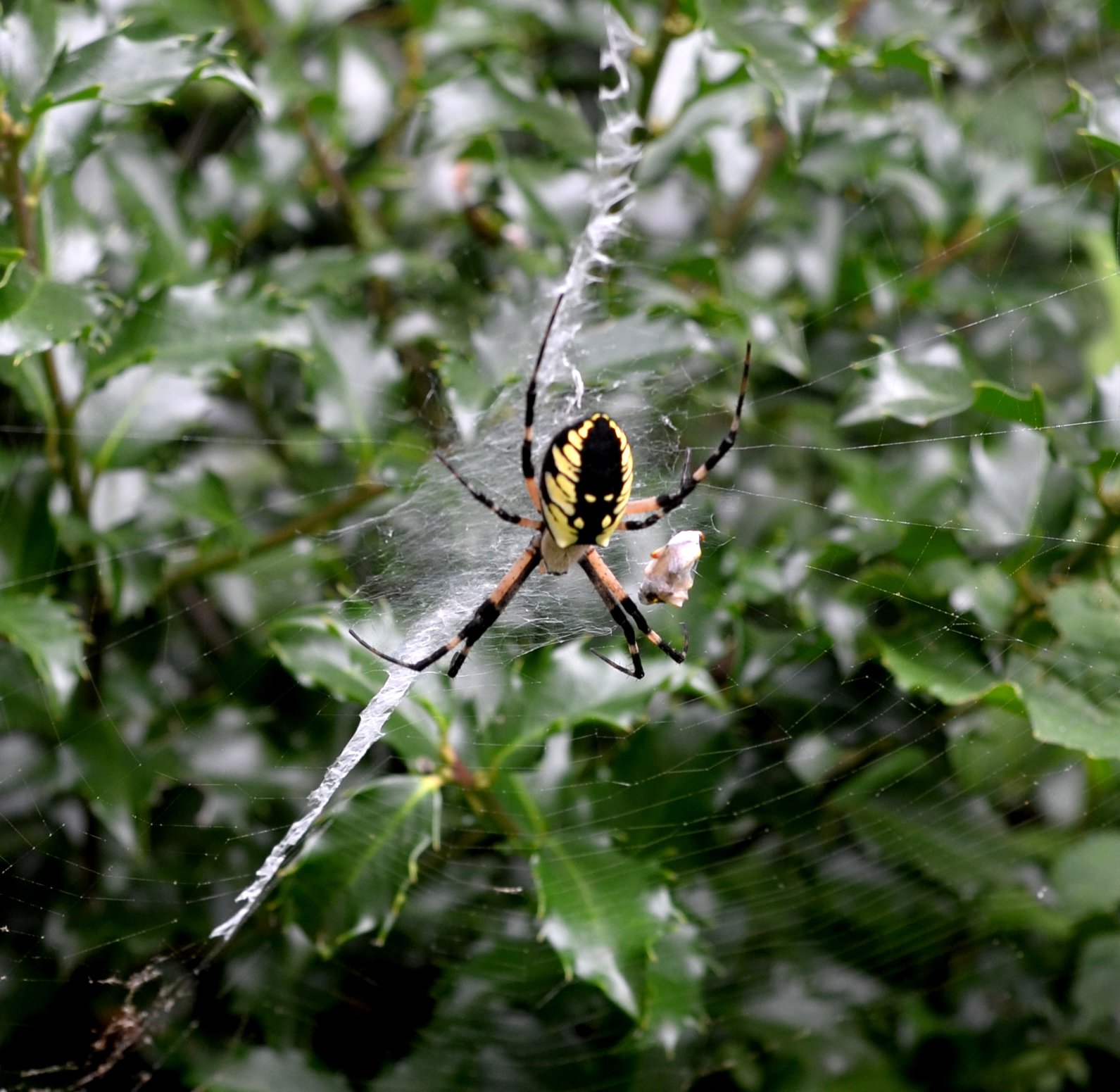
Finally the wasps! As the goldenrod gets yellower and yellower, the wasps are beginning to shift their attention from the trumpetvine to the goldenrod. I finally found a match for this gorgeous potter wasp. Its face and abdomen look most like Ancistrocerus adiabatis! Another potter, Cerceris arenaria, revealed itself last week - its face looks like three parallel vertical stripes and its stripes don't go all the way around its abdomen.
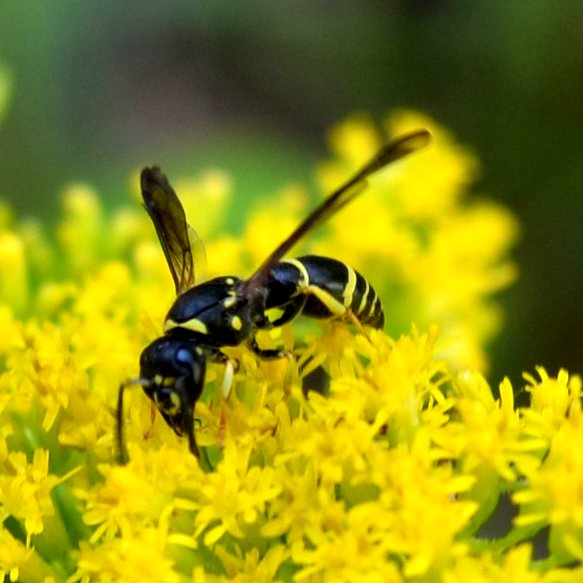
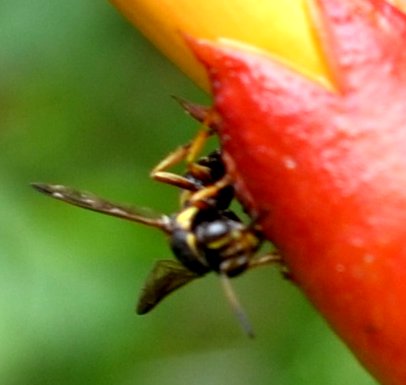
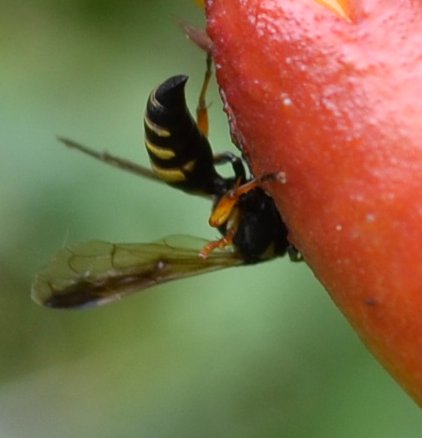
This image of the potter wasp Eumenes fraternus managed to catch its face and also its stray comma mark on the upper part of the abdomen Now Vespula is a genus of yellowjackets. This week Vespula vidua was quite prevalent out there. This one has caught a large bit of prey to take to feed its babies. This Dolichovespula (name means "long yellowjacket") arenaria (means has an arial nest) male is, surprise, an arial yellowjacket and very common at that wasp eatery, the Trough of Trumpetvine.
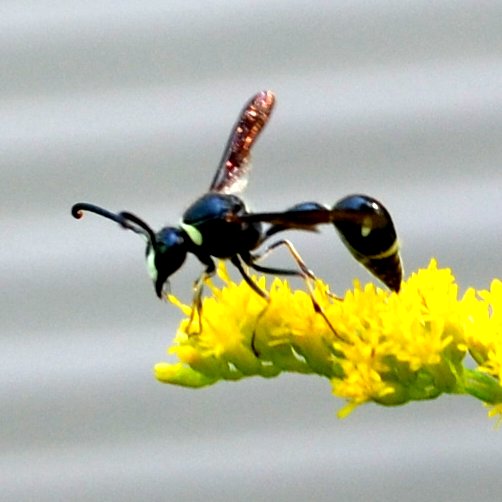
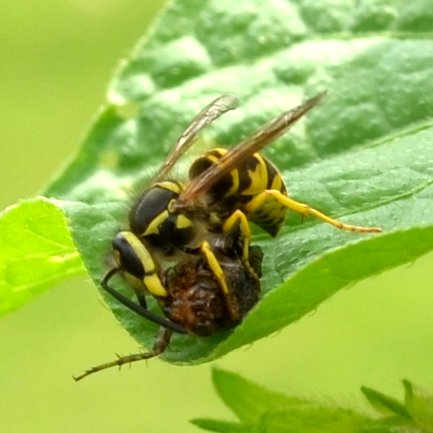
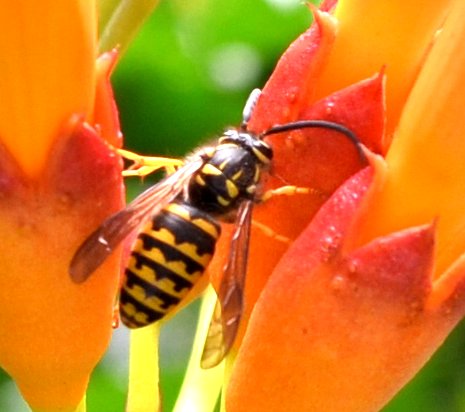
The ichneumon wasps love to frolic on the hosta leaves. Here's one that we saw last week, a male. Here's another kind. And one of those little blue-black wasps, maybe a mud wasp.
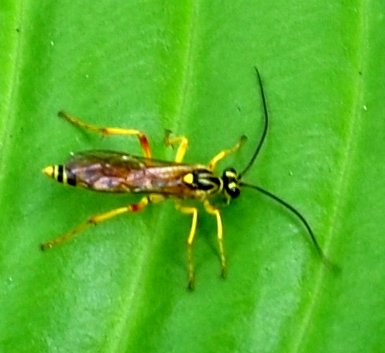
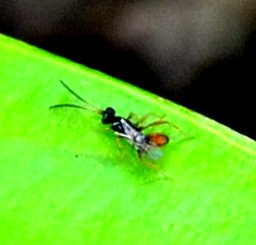
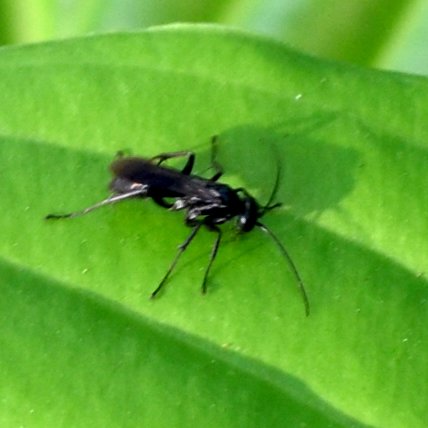
There are still a lot of European Paper Wasps. But the activity level seemed down a bit back at the AC Hotel.
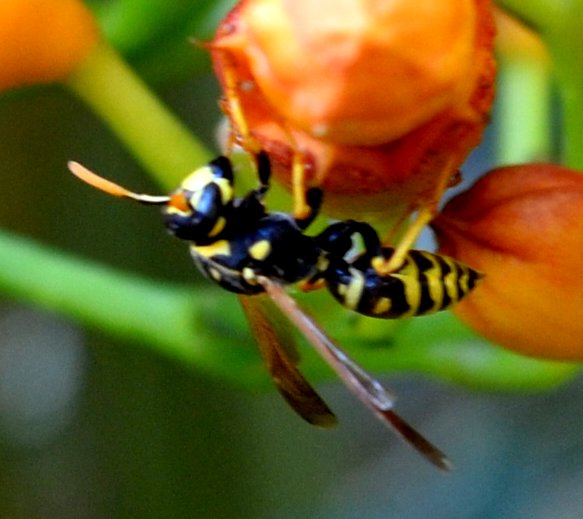
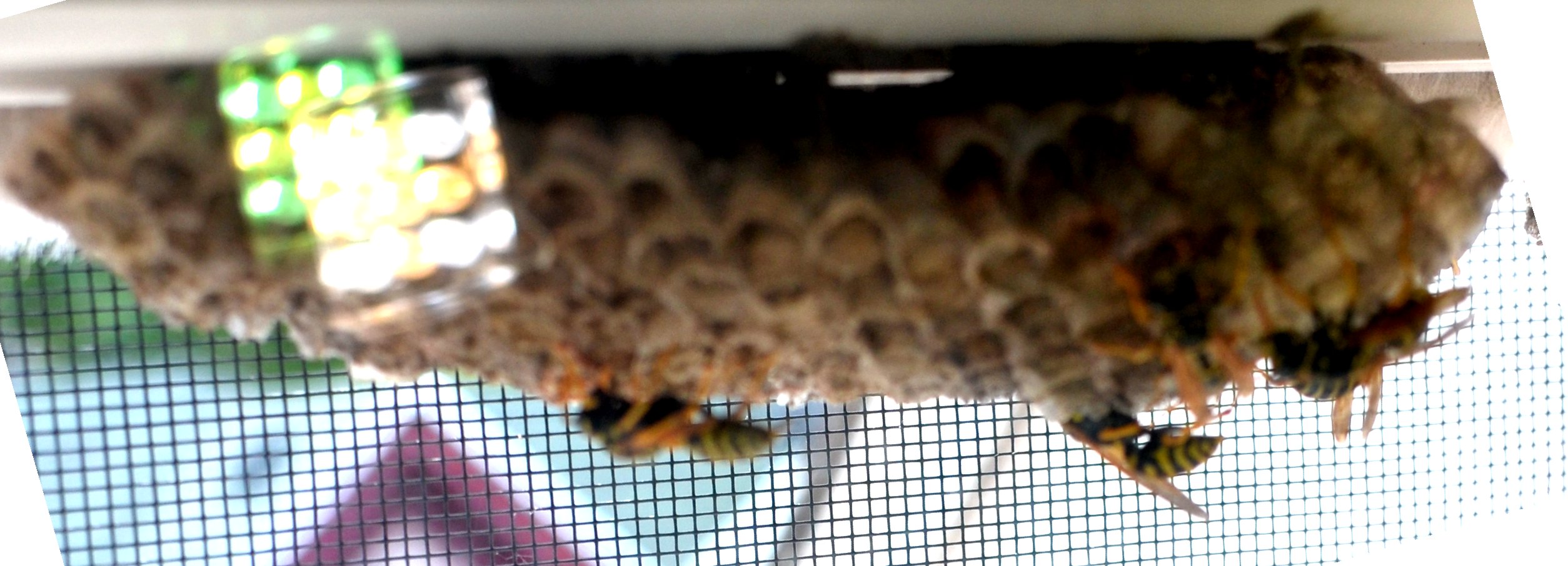
A couple more pictures to round out the blog. This is a phlox I actually bought years ago. It isn't so happy shade-wise but its flowers are a gorgeous shade of hottest pink. And a story that needs no words.
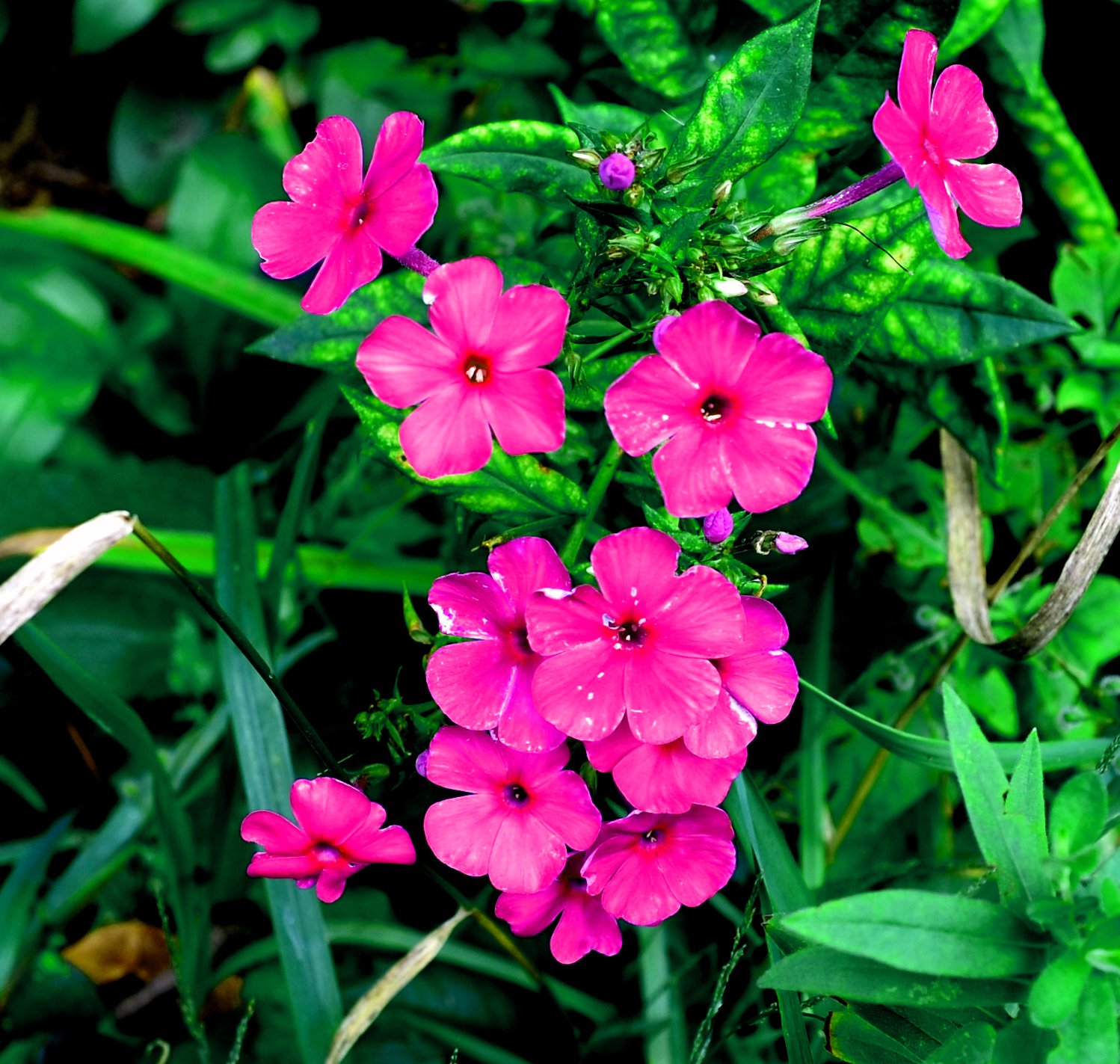
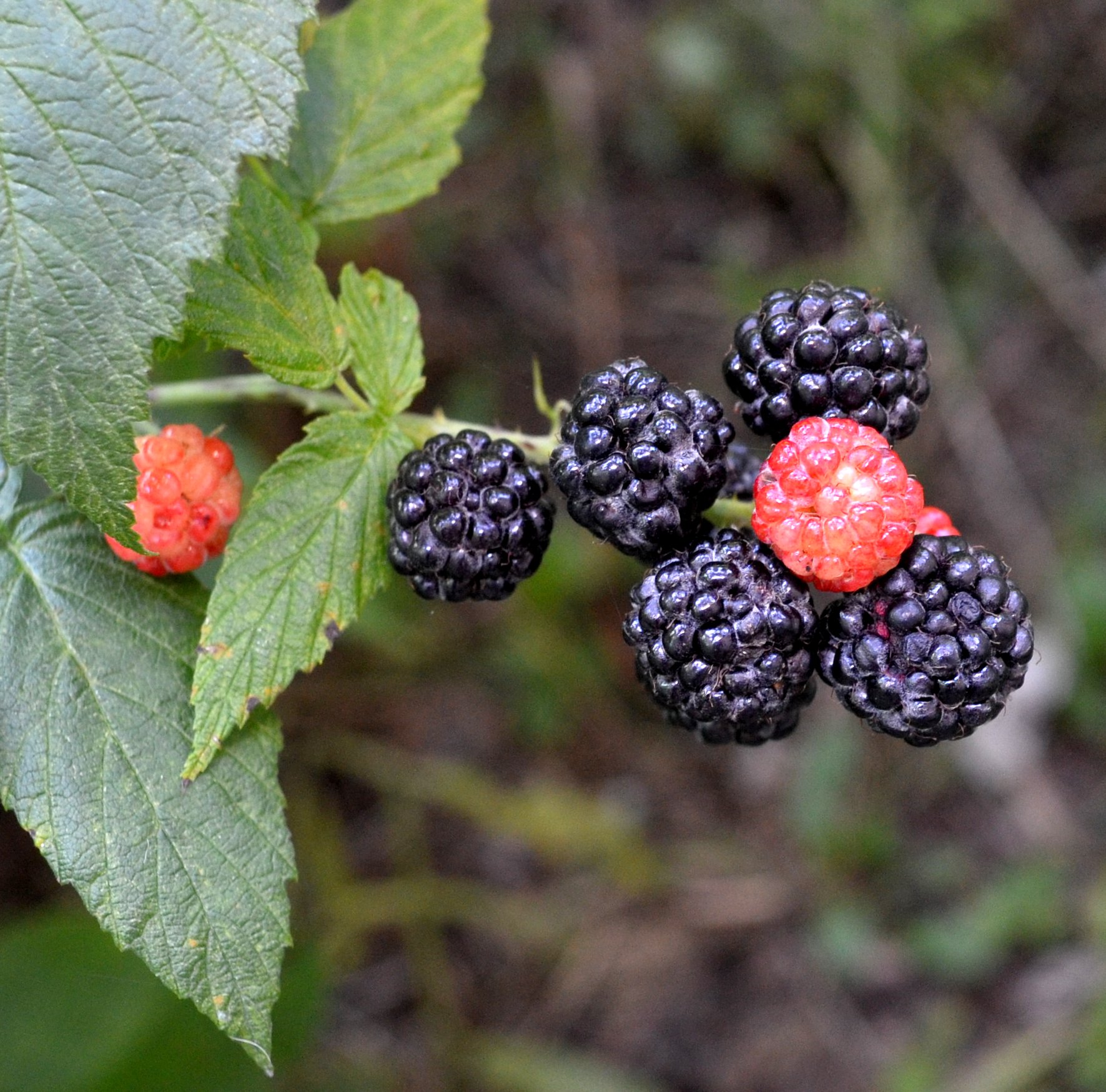
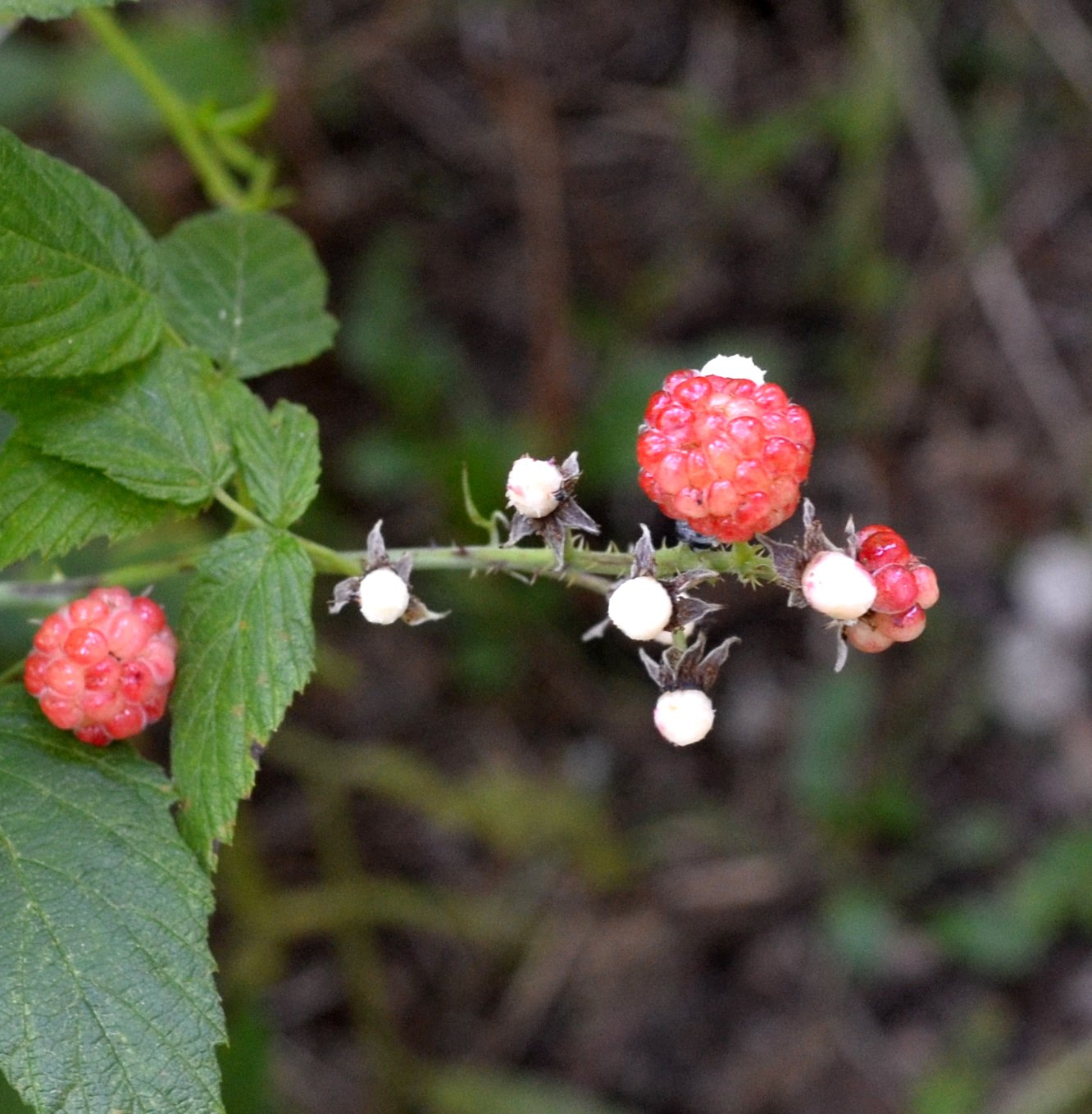
That's about the news from the garden that transforms itself every season into a haven for another kind of little creature! I hope all is well with all of you.
Love, Martha
Back to August 21
On to September 4
Back to 2016 menu
Back to main menu
copyright Martha O'Kennon 2016














.jpg)












































 Manduca sexta 8 26 16 3.jpg)
 Manduca sexta 8 26 16 2.jpg)






































